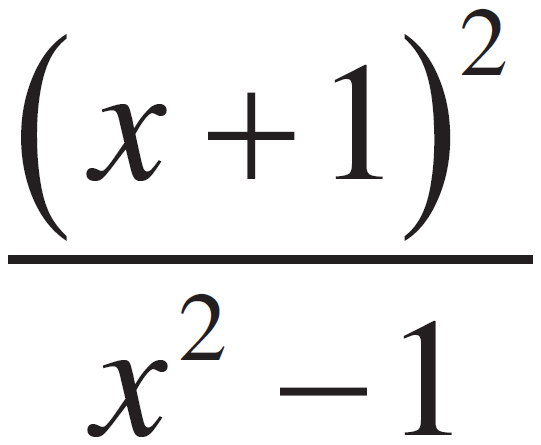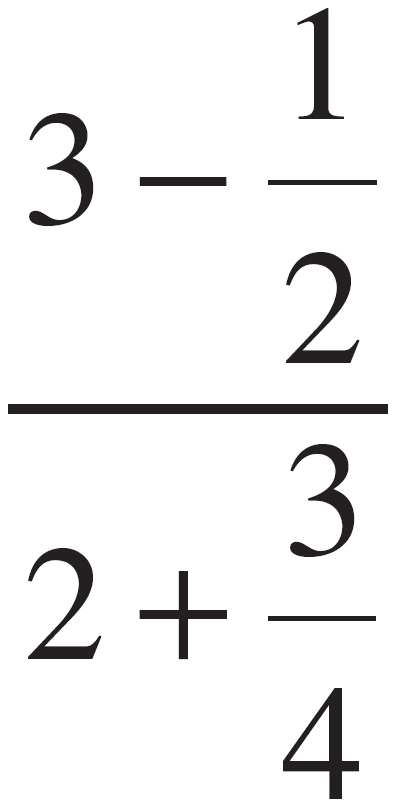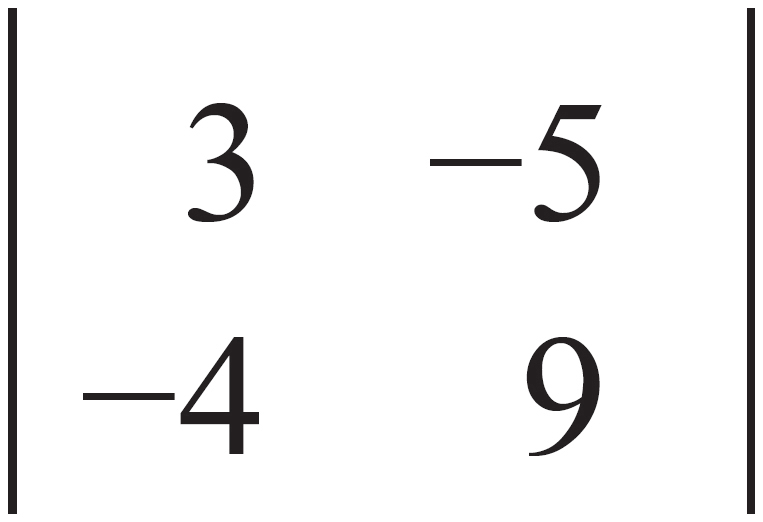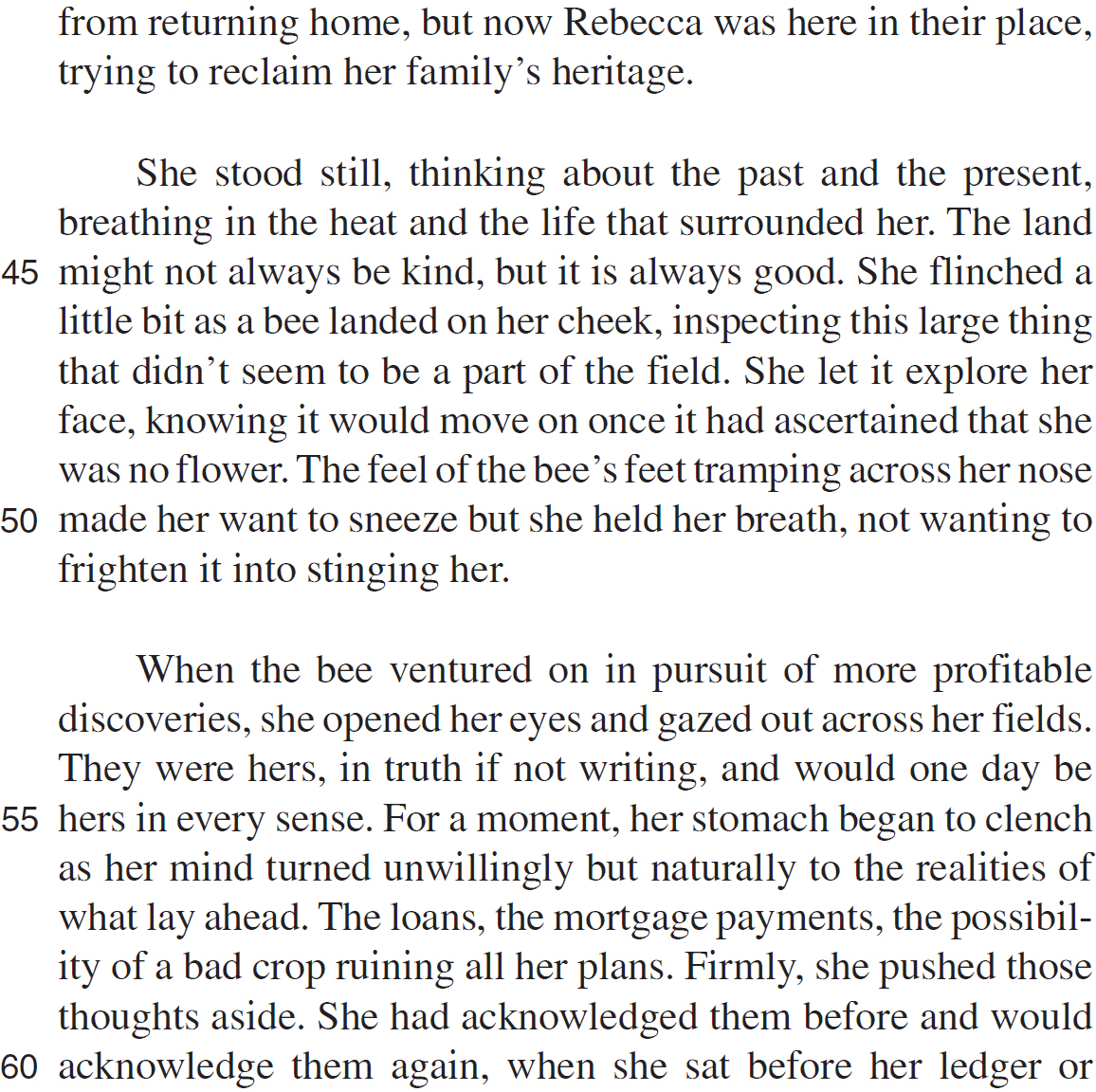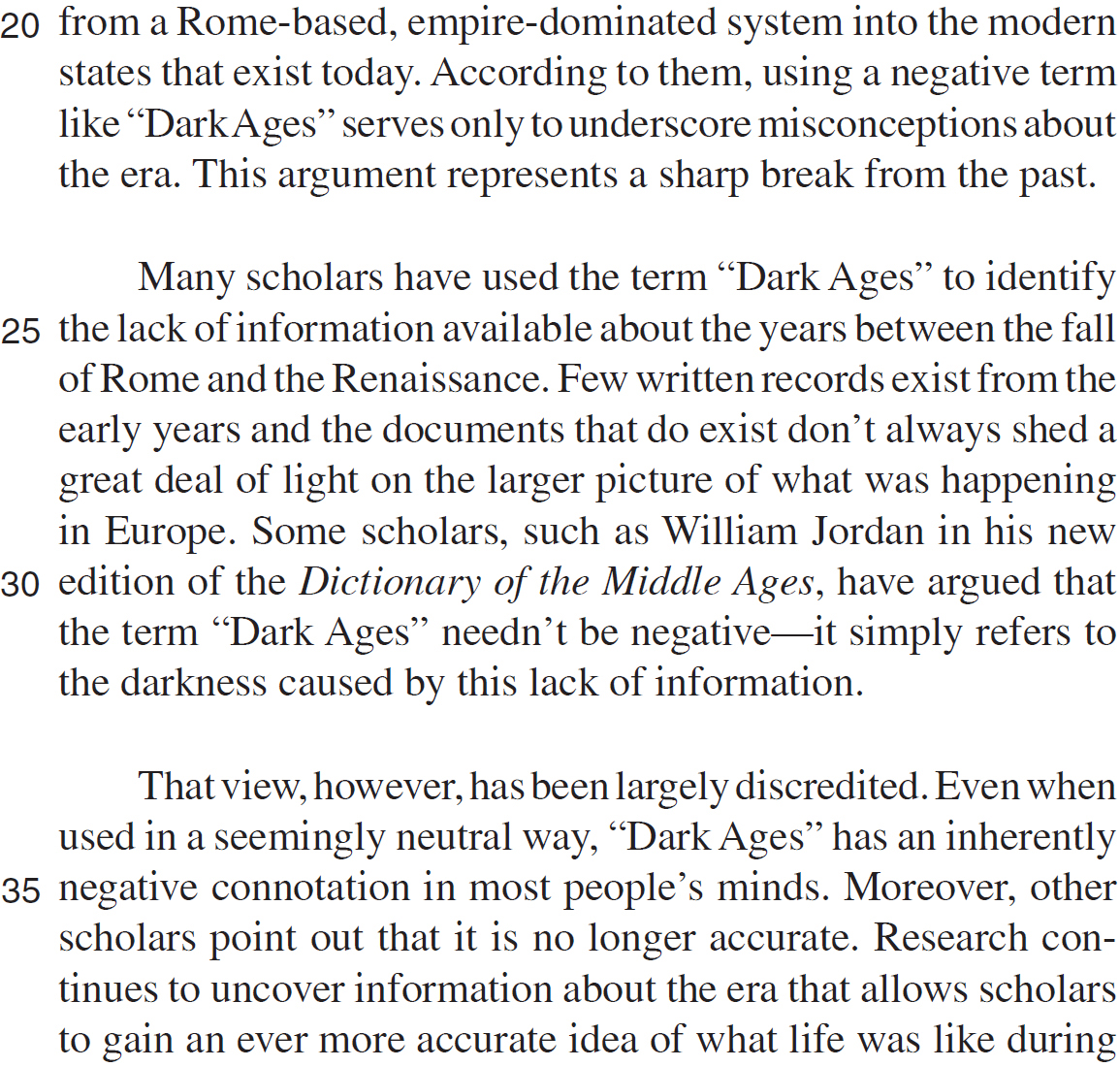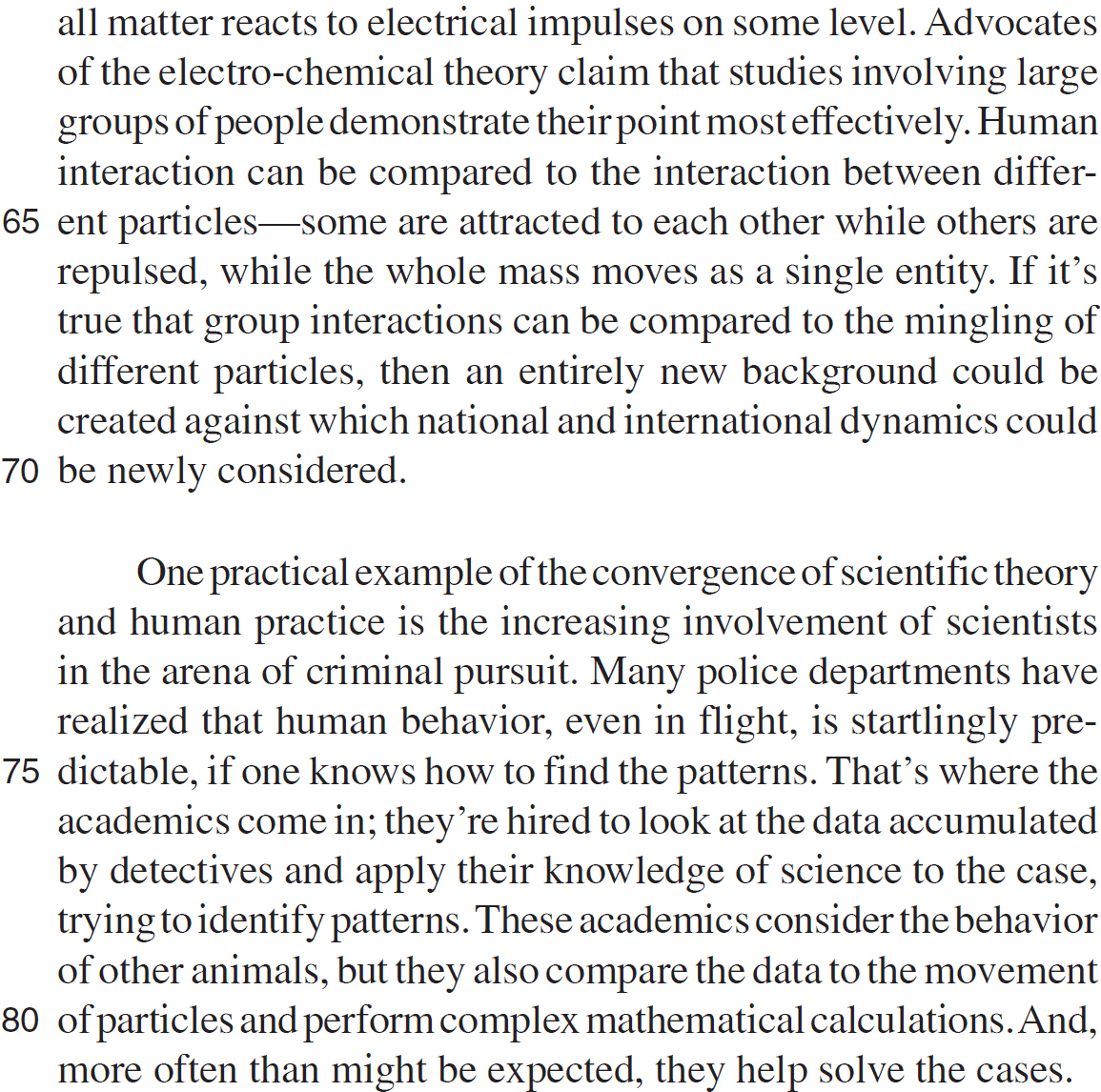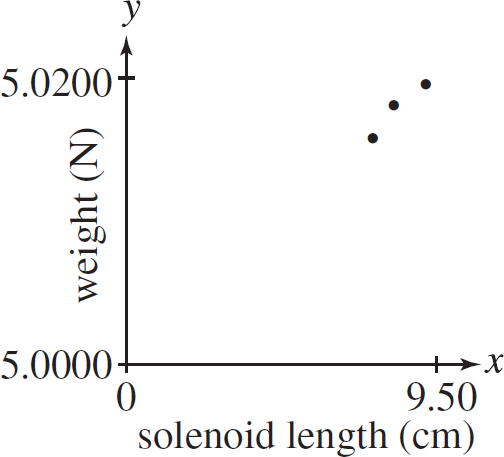Chapter 32
Practice Exam 4
Click here to download the PDF.

ENGLISH TEST
45 Minutes—75 Questions
DIRECTIONS: In the five passages that follow, certain words and phrases are underlined and numbered. In the right-hand column, you will find alternatives for each underlined part. In most cases, you are to choose the one that correctly expresses the idea, makes the statement appropriate for standard written English, or is worded most consistently with the style and tone of the passage as a whole. If you think the original version is correct, choose “NO CHANGE.” In some cases, you will find in the right-hand column a question about the underlined part of the passage. You are to choose the correct answer to the question.
You will also find questions about a section of the passage or the passage as a whole. These questions do not refer to an underlined portion of the passage, but rather are identified by a number or numbers in a box.
For each question, choose the alternative you consider correct and blacken the corresponding oval on your answer document. Read each passage through once before you begin to answer the questions that accompany it. For many of the questions, you must read several sentences beyond the question to determine the answer. Be sure that you have read far enough ahead each time you choose an alternative.
PASSAGE I
Lou Gehrig, All-American
Since their inception in 1913, the New York Yankees have long been regarded as a force in Major League Baseball. Love them or hate them, there is no denying the tradition of excellence that they have leveraged in order1 to win 26 World Series championships, a league record.
1. Which of the following alternatives to the underlined portion would NOT be acceptable?
A. so as
B. as a means
C. so that
D. DELETE the underlined portion.
The Yankees have had many great baseball players2 contribute to the team, but one man stands out for his fortitude and good spirit: Lou Gehrig. Born to poor German immigrants in 1903, Gehrig received no encouragement to pursue baseball as a career. His mother considered business3 a better line of work for her son, wanting him to excel academically, not physically. Gehrig followed her wishes, at least at first. He attended Columbia University, but after only two years, and without a degree, Gehrig left school.
A. NO CHANGE
B. His mother, considering business
C. Business was considered by his mother to be
D. Business considered his mother
However, he did have a job lined up before he withdrew from college. A Yankee scout had seen an intercollegiate game Gehrig played in4—coincidentally, on the very day Yankee Stadium first opened to the public in 1923—and immediately signed him to a contract. He played well in his first three years in the majors, but he did not become a true superstar until 1926.
4. Which of the following alternatives to the underlined portion would be LEAST acceptable?
F. that featured Gehrig
G. that Gehrig played in
H. in which Gehrig played
J. and played Gehrig
He broke many, long-standing records,5 including those for runs batted in and extra-base hits, and even played in 2,130 consecutive games! His formidable skills and unflinching dedication to the sport interested6 his teammates and the fans alike.
A. NO CHANGE
B. broke many long-standing records,
C. broke many, long-standing, records
D. broke many long-standing records
6. Given that all the choices are true, which one most clearly communicates how positively Gehrig was viewed as a player?
F. NO CHANGE
G. impressed
H. offended
J. confused
[1] The prognosis was a veritable death sentence. [2] Then suddenly, Gehrig’s7 amazing stamina and talent seemed to
dissipate, leading one sports reporter to speculate8 that something was physically wrong with the athlete. [3] Unfortunately, that reporter was right: Gehrig was diagnosed with amyotrophic lateral sclerosis, a degenerative disease that leads to paralysis of both voluntary muscles and involuntary muscles, like those needed to control breathing and swallowing. 9
8. Which of the following alternatives to the underlined portion would be LEAST acceptable?
F. writer to infer
G. sports reporter to infer
H. writer to speculate
J. sports reporter to imply
9. Which of the following sequences of sentences makes this paragraph most logical?
A. NO CHANGE
B. 1, 3, 2
C. 2, 1, 3
D. 2, 3, 1
Most people faced with such daunting news would of withdrawn10 from society and mourned their fates.
11 However, on the day of
11. At this point, the writer is thinking about adding the following true statement:
I know when I had to put my dog to sleep when he got cancer, all I could do was cry in my room for days.
Should the writer make this addition here?
A. Yes, because it provides a personal example comparable to the experience Lou Gehrig faced.
B. Yes, because it helps clarify the concept of mourning mentioned in the previous sentence.
C. No, because it detracts from the overall flow of the paragraph by adding irrelevant information.
D. No, because Gehrig did not have cancer.
Gehrig’s retirement12 from baseball, he delivered one of the most famous speeches of the time. He acknowledged his grim fate but paid tribute to the life-affirming support he’d received from his fans: “The ballplayer who loses his head, who can’t keep his cool, is worse than no ballplayer at all.”13 He spoke highly of the encouragement his fans always provided and proudly proclaimed that, despite his fate, he didn’t regret
13. Given that all the choices are quotations attributed to Gehrig, which one would most effectively support the preceding statement in this sentence?
A. NO CHANGE
B. “They’re wishing me luck—and I’m dying.”
C. “I don’t know if we’re going to be successful or not, but we’re going to give her a go.”
D. “Yet today I consider myself the luckiest man on the face of the earth.”
anything in his life or career. He was a man who’s14 eternal optimism and good spirit lived on as a legacy of hope and kindness for fans everywhere. We would all do well to learn that lesson.
Question 15 asks about the preceding passage as a whole.
15. After reviewing this essay, the writer is thinking about deleting its opening phrase—“Since their inception in 1913,”—and revising the capitalization accordingly. Should this phrase be kept or deleted?
A. Kept, because it explains why the New York Yankees have been so successful.
B. Kept, because it establishes when in Yankees’ history Gehrig lived and played.
C. Deleted, because it provides information that is presented effectively later in the passage.
D. Deleted, because it does not provide the years in which the Yankees won the World Series.
PASSAGE II
A Quarter for Your Thoughts
Ever since I was a little girl, I could always count on my grandmother to initiate a wonderful field trip. We lived in Virginia and so had immediate access to hundreds of famous places. Nonetheless, she16 took me to Civil War battlefields, historic homes, national monuments, anywhere that had a story
to tell. Old lighthouses can be dangerous, with rickety stairs and rotting floorboards.17
17. Given that all the choices are true, which one best identifies a personal connection the narrator feels to the locations she visits?
A. NO CHANGE
B. National monuments are especially fun to visit, but the lines can be quite long.
C. Civil War battlefields feel so alive when you walk through them; you almost expect to see a soldier around every corner.
D. The historic homes we visited are so nice they have been featured in decorating magazines.
My love of history has only grown over the years.18 History was always so real for me, not the dull, dusty stuff other people
18. Given that all the choices are true, which one introduces the subject of this paragraph and reinforces the essay’s presentation of the relationship between the narrator and her grandmother?
F. NO CHANGE
G. My grandmother never visited Washington, D.C. until she was in her twenties, even though she lived so close.
H. A proper understanding of history requires extensive reading.
J. My grandmother indulged my love of history and deepened my appreciation for all there is to learn from it.
seemed to think it was. My trips’19 with my grandmother made me feel as if I were shivering with George Washington at Valley Forge, where the Revolutionary Army endured a brutal winter, or hearing the words to the Gettysburg Address from Abraham
Lincoln himself. 20 How could that ever be boring?
20. The writer is considering deleting the phrase “where the Revolutionary Army endured a brutal winter” from the preceding sentence (deleting the comma following the phrase). Should the phrase be kept or deleted?
F. Kept, because it maintains the passage’s focus on history.
G. Kept, because it explains the significance of Valley Forge, which might otherwise cause confusion.
H. Deleted, because the narrator has already established her interest in history.
J. Deleted, because the information overstates the severity of the weather during the Revolution.
One day when I was visiting her, my grandmother took out a big, flat box.21 “This is for you. I thought we could begin a new
21. Given that all the choices are true, which one best introduces the subject of this paragraph?
A. NO CHANGE
B. In my opinion, anything that has happened in the last century isn’t history; it’s current events.
C. My grandmother originally wanted to be a history teacher.
D. Studying history has really encouraged me in my other studies, too.
project,” she told me, handing me a pamphlet to read.22 The U.S. Mint was starting a project, minting brand new quarters for each of the 50 states bearing images significant and unique to each state’s history. The box contained a map of the country, and each23 state had a space where we could insert its quarter.
F. NO CHANGE
G. she told me to hand her a pamphlet to read.
H. she read a pamphlet, telling me to hold it.
J. she handed me a pamphlet, holding it.
My enthusiasm caused laughter24 for a “quarter collection” project, my friends didn’t understand my eagerness when I eagerly tromped to the bank every couple of months when a new quarter came out. I was so excited when the first three were released25 Delaware, Pennsylvania, and New Jersey. My grandmother and I would insert each quarter in its proper place and look up the story behind each new image we
F. NO CHANGE
G. Laughing at my enthusiasm
H. So as to laugh about my enthusiasm
J. Finding humor
saw. Amusingly,26 as time progressed, even my friends liked to look at the growing collection of quarters on my map, asking
26. Which of the following alternatives to the underlined portion would NOT be acceptable?
F. saw. I was amused to see that,
G. saw. To my utter amusement,
H. saw; amusingly,
J. saw, amusingly,
questions and appreciating with admiration27 the pristine collection.
When the final quarter came out last year, my grandmother, my friends, and I had a small party, we wanted to28 celebrate the complete collection. I think it is safe to say that
the party was a smashing success.29 Now, my grandmother says
29. Given that all the choices are true, which one best makes a connection between the narrator’s view of history and that of her friends?
A. NO CHANGE
B. my friends enjoyed themselves at the party.
C. my friends now firmly believe that history can be fun, just like me.
D. my friends are a little less negative about the study of history.
we’ll have to start planning to visit all 50 states. I wonder30 where we’ll go first!
30. Which of the following alternatives to the underlined portion would be LEAST acceptable?
F. am curious
G. am anxious to see
H. am nervous about
J. can’t wait to know
PASSAGE III
Aviation Princess
My daughter just turned nine last week. We went to the mall, and I gave her the best gift I could imagine: free rein to pick out anything she wanted and desired to have.31 I expected her to pick out some clothes, a new video game, maybe even a
A. NO CHANGE
B. wanted, so that she could pick out her desire.
C. wanted.
D. wanted and had come to desire.
doll. However, she32 insisted the only one thing she wanted was a model airplane.
32. Which of the following alternatives to the underlined portion would NOT be acceptable?
F. doll; however, she
G. doll, but she
H. doll however she
J. doll. She
I guess about her request33 I shouldn’t be surprised. My
33. The best placement for the underlined phrase would be:
A. where it is now.
B. before the word shouldn’t.
C. after the word shouldn’t.
D. after the word surprised (ending the sentence with a period).
daughter has grown up34 in a military household, the pride and joy
of her overly doting father. He finds it perfectly appropriate35 that, from a very early age, she has shared his love of aviation. I’ll never forget my utter dismay when he taught her to jump off the
35. Which of the following alternatives to the underlined portion would NOT be acceptable?
A. believes it appropriately
B. believes it appropriate
C. considers it entirely appropriate
D. deems it perfectly appropriate
swing set in our backyard, pretending36 she was a pilot and shouting, “Airborne!” I believe she was four at the time, but even
then she would play pilot more than play house.37
37. Which of the following alternatives to the underlined portion would NOT be acceptable?
A. house.
B. she would play house.
C. house was.
D. she played house.
Yet38 soon stories and pictures of aircraft weren’t enough; she wanted to see the real thing. So my husband started taking her to the annual air show at the local military base that happens every year.39 Most other children her age admired how fast the planes flew or how nicely they were painted, but not
A. NO CHANGE
B. that takes place each year.
C. which occurs every twelve months.
D. DELETE the underlined portion and end the sentence with a period.
my daughter. 40 She would ask, “Daddy, when are they going to upgrade the avionics system in that F-22 Raptor?” or “Do you think unmanned drones will ever be as useful as manned aircraft?” I once overhead her correcting an older gentleman
40. The writer is considering deleting the phrase other children her age from the preceding sentence. Should this phrase be kept or deleted?
F. Kept, because it clarifies the types of questions children should be asking at air shows.
G. Kept, because it emphasizes how different the narrator’s daughter is from other children her age.
H. Deleted, because it introduces information about aircraft but does not provide enough specific details.
J. Deleted, because it interrupts the flow of passage.
whom41 was mistaken about the planned retirement date of the F-15 Eagle. I would have been embarrassed about her
presumption, if she hadn’t been absolute and unequivocal42 right.
F. NO CHANGE
G. absolute and unequivocally
H. absolutely and unequivocal
J. absolutely and unequivocally
Of course, my husband has big dreams43 for his little aviatrix. She is going to be a military pilot, graduating at the top of her class from the Naval Academy. Then she’s going
43. Which of the following alternatives to the underlined portion would be LEAST acceptable?
A. ambitious aims
B. impossible hopes
C. great aspirations
D. impressive plans
to be the individual who44 design the next-generation supersonic fighter personally, while lecturing at Harvard about the history of
fixed-wing aircraft. Otherwise, how45 she’s going to fit that in between being a surgeon and the president, I’ll never know!
PASSAGE IV
Light Bright, Light Bright: Turn on the Magic of Colored Light
As a child, I used to catch fireflies at dusk when I was young.46 I
F. NO CHANGE
G. when I was a youth.
H. before I grew up.
J. DELETE the underlined portion and end the sentence with a period.
remember feeling a strange excitement which,47 looking into my cupped hands, I would see the light grow brighter then dimmer as the fly flitted from one side to the other, trying to find an escape. What I should have felt, however, was amazement at the biological wonder I saw before me: bioluminescence.
Bioluminescence literally means “living light,” and48 it refers to a strange adaptation found in some organisms. It allows these organisms to create a chemical reaction that generates and emits
light. Even though scientists49 know that this light is not intended to be a heat source, they’re not totally certain what it is intended to do, either. Theorists hypothesize that organisms use their
self-manufactured light for camouflaging themselves,50 illuminate their surroundings, attract mates and prey, repulse predators, and
F. NO CHANGE
G. in camouflaging theirselves,
H. to camouflage itself,
J. to camouflage themselves,
even communicate. 51 How the same adaptation can be designed to both attract and repulse, however, is still a matter of contention.
51. The writer is considering deleting the phrase “repulse predators” from the preceding sentence (deleting the comma after the phrase). Should the phrase be kept or deleted?
A. Kept, because it is an essential detail referred to directly in the next sentence.
B. Kept, because the evolutionary trait of repulsing predators is critical to survival of the fittest.
C. Deleted, because it repeats information previously provided in the essay.
D. Deleted, because it makes the sentence long and difficult to understand.
The number of terrestrial or land-based,52 organisms that exhibit bioluminescence is rather small, and many, such as fireflies and spiders, are fairly small in stature. In fact, the vast majority are single-cell organisms that cannot be seen with the naked eye. Unlike these smaller organisms, researchers are puzzled as to why most animals53 and humans did not evolve this unique trait. Apparently the adaptation was not universally necessary, given the bright rays of the sun that bathed the surface year-round.
F. NO CHANGE
G. terrestrial or, land-based
H. terrestrial, or land-based,
J. terrestrial, or land-based
A. NO CHANGE
B. most animals
C. animal researchers seek to discover why most animals
D. researchers do not know why most animals
However, sunlight clearly doesn’t stop the development of bioluminescence.54 In total, ninety percent of all deep-sea marine lifeforms experience some sort of bioluminescence. Fish, sharks, eels, and octopi, to name only a few, have all been seen to bioluminesce in the murky depths. The most commonly
54. Given that all the choices are true, which one best indicates the focus of this paragraph?
F. NO CHANGE
G. conditions are quite different in the ocean.
H. there is no evidence that bioluminescence has ever developed anywhere other than on planet Earth.
J. humans do not need bioluminescence, because we can use our intellect to manipulate our surroundings.
emitted colors are blue and green, but55 red and yellow have also
been observed. Its56 a veritable rainbow of color 1,800 meters
below the surface thanks of these organism’s lights,57 even though almost no visible light can penetrate to that level.
The extreme depth at which most of these organisms exist represents the biggest obstacle researchers face in determining the primary function of bioluminescence. Undoubtedly, this will slow the pace of exploration more then lack of money.58 For that reason, it may be some time before this mysterious
adaptation is clarified.59
59. Which of the following alternatives to the underlined word would be LEAST acceptable?
A. fully explained.
B. accounted for.
C. transmitted.
D. cleared up.
Question 60 asks about the preceding passage as a whole.
60. Suppose the writer’s goal had been to write a brief essay focusing on a fascinating evolutionary adaptation that can be found in multiple habitats. Would this essay accomplish this goal?
F. Yes, because fireflies exhibit the adaptation and live in trees.
G. Yes, because bioluminescence is described, and it occurs in both marine and non-marine habitats.
H. No, because fireflies cannot live in both air and water.
J. No, because all the habitats described exist on the same planet.
PASSAGE V
Doctors Without Borders
In America, we take many things for granted. If we don’t feel well, we see a doctor. If we’re hungry, we eat something. If we’re thirsty, we drink some water. These61 very basic actions can be amazingly difficult, if not impossible, in some parts of the
A. NO CHANGE
B. (Do NOT begin new paragraph) Yet these
C. (Begin new paragraph) These
D. (Begin new paragraph) Yet these
world. That is why a group of French physicians, started62 Doctors Without Borders in 1971.
Doctors Without Borders started as a humanitarian aid designed to reach out to the innocent victims of wars in lesser-developed parts of the world.63 The doctors who first started the organization had been working in Nigeria during the country’s very bloody civil war in the late 1960s. There, they saw
63. Which choice most effectively introduces the basic goal of Doctors Without Borders, as described elsewhere in the essay?
A. NO CHANGE
B. tends to specialize in trauma treatment, which helps the doctors in their personal medical practices when they return home.
C. has never sought political support from the United States or other countries, because it wants to remain completely neutral.
D. has never operated within the United States, although arguably there are many people here who could benefit from its services.
everything from starvation, and disease,64 to death and outright murder happening in the streets, and neither the United Nations
nor the Red Cross seemed to do anything to stop these atrocities.65
65. Which of the following alternatives to the underlined portion would be LEAST acceptable?
A. horrors.
B. offenses.
C. wrongs.
D. alarms.
66 The doctors felt that, although they couldn’t put an end to the fighting itself, they could at least help to alleviate the
66. The writer is considering deleting the preceding sentence. Should this sentence be kept or deleted?
F. Kept, because readers are used to hearing about murders and starvation anyway.
G. Kept, because it provides a specific example of the type of actions that provoked the doctors to take action.
H. Deleted, because it does not explain how the doctors actually stopped the fighting in Nigeria.
J. Deleted, because it detracts from the actual foundation of Doctors Without Borders.
suffering, thus67 they declared themselves neutral in the conflict and entered war-torn areas to provide aid to anyone who needed it, regardless of which side of the conflict the person was on.
In contrast, the68 original mission was simply to provide health care as well as medical training to up-and-coming doctors
in the various regions. 69 In desperate need of medical
69. The writer is considering deleting the phrase “to up-and-coming doctors” from the preceding sentence. Should the phrase be kept or deleted?
A. Kept, because it clarifies to whom the medical training is being provided.
B. Kept, because it is important to specify that there are doctors already practicing in the region.
C. Deleted, because a person who has not successfully graduated from medical school cannot be considered a doctor.
D. Deleted, because Doctors Without Borders should not take such a grandiose task on themselves without government sanction.
attention70 suffering in war-torn regions certainly felt the aid Doctors Without Borders supplied was important. When not in
the direct line of fire between71 two opposing military groups, however, the organization puts special emphasis on the preventative aspects of health care, especially vaccinations, good nutrition, and sanitation. These seeming72 simple goals have made substantial strides in the overall quality of health in Africa, where most of the work of Doctors Without Borders has been focused over the last 40 years.
Sadly, the noble effort expended by these selfless doctors have73 not met universal support. In some conflicts, the aid workers—despite their political neutrality—have found themselves the victims of kidnappings, arrests, even murder. Doctors who volunteer to serve74 in Doctors Without Borders know the dangers
A. NO CHANGE
B. efforts expended by these selfless doctors have
C. efforts expended by these selfless doctors has
D. effort expended by these selfless doctors had
they face, yet they choose to try to help anyway. We can only hope that eventually their dignified actions will become unnecessary.75
75. Given that all the choices are true, which one most clearly shows that the self-sacrifice of the doctors deserves praise?
A. NO CHANGE
B. I don’t know if I would have that depth of conviction or level of courage.
C. Such unsung courage truly speaks to the depth of human kindness, and should be a lesson to us all.
D. It is truly a shame that they are put into dangerous positions.
END OF TEST 1
STOP! DO NOT TURN THE PAGE UNTIL TOLD TO DO SO.

MATHEMATICS TEST
60 Minutes—60 Questions
DIRECTIONS: Solve each problem, choose the correct answer, and then darken the corresponding oval on your answer sheet.
Do not linger over problems that take too much time. Solve as many as you can; then return to the others in the time you have left for this test.
You are permitted to use a calculator on this test. You may use your calculator for any problems you choose, but some of the problems may best be done without using a calculator.
Note: Unless otherwise stated, all of the following should be assumed:
1. Illustrative figures are NOT necessarily drawn to scale.
2. Geometric figures lie in a plane.
3. The word line indicates a straight line.
4. The word average indicates arithmetic mean.
1. In a geometric sequence, the quotient of any two consecutive terms is the same. If the third term of a geometric sequence is 8 and the fourth term is 16, then what is the second term?
A. −8
B. −4
C. 2
D. 4
E. 8
2. If the function f(a, b) is defined as f(a, b) = 2ab − (a + b), then f(3, 4) = ?
F. 7
G. 17
H. 21
J. 24
K. 31
3. The Korean BBQ taco truck sells short rib tacos for 99¢. Christine has only pennies, nickels, dimes, and quarters in her purse. If she wants to pay with exact change, then what is the least number of coins Christine can use to buy a 99¢ taco?
(Note: Assume any sales tax is included in the price.)
A. 6
B. 7
C. 8
D. 9
E. 10
4. What is the area, in square inches, of a square with a side length of 8 inches?
F. 8
G. 16
H. 24
J. 32
K. 64
7. Lauren’s world history teacher needs to select one of his 19 students to lead the class in song. Lauren’s teacher decides that the song leader, who will be chosen at random, CANNOT be any of the 4 seniors in the class. What is the probability that Lauren, who is NOT a senior, will be chosen?
A. 0
B. 
C. 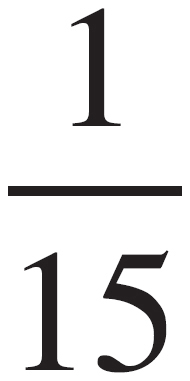
D. 
E. 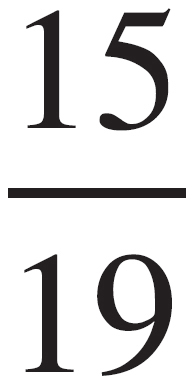
9. Joe rents a car to drive across the state to visit his family for Thanksgiving. The car rental company charges Joe $112 for the weekend rental, plus $0.99 for each mile he drives. If Joe drives the rental car m miles, then which of the following expressions gives Joe’s total cost, in dollars, for renting the car?
A. 0.99m − 112
B. 0.99m + 112
C. 49.95m
D. 112m + 0.99
E. 112.99m
10. Stella wants to buy a scooter for $4,800. A loan company offers to finance the purchase in return for payments of $130 a month for 4 years. If Stella were to finance the scooter, then how much more than the purchase price of the scooter will Stella have paid at the end of the 4-year period?
F. $ 520
G. $ 780
H. $ 1,040
J. $ 1,300
K. $ 1,440
13. Point C is at 3.5 on the real number line. If Point D is also on the real number line and is 8.5 units from C, then which of the following are the possible locations of D ?
A. −12 and −5
B. −12 and 5
C. −5 and 5
D. 12 and −5
E. 12 and 5
14. The mean of 4 numbers in a data set is 7. If 3 of these numbers are 2, 4, and 10, then which of the following is the fourth number?
F. 4
G. 7
H. 8
J. 10
K. 12
15. Motorcars, Inc. made $1,489,000 in net profit in 2007. In 2009, Motorcars, Inc. made $1,725,000 in net profit. If the net profit increased linearly from 2007 through 2009, then what was the net profit earned in 2008 ?
A. $1,607,000
B. $1,698,000
C. $1,724,000
D. $1,779,000
E. $1,842,000
16. The art teacher at Valley High School is decorating her classroom by reproducing famous pictures on her walls. She has a picture 8 inches wide and 10 inches tall that she wants to replicate to scale on the wall. If the painting on the wall will be 6 feet tall, then approximately how wide will the painting be, in feet?
F. 5
G. 7
H. 9
J. 11
K. 13
17. The formula for line l in standard form is 5x − y = 2. Which of the following gives the formula for line l in slope-intercept form?
A. y = 5x + 2
B. y = 5x − 2
C. y = 2x − 5
D. y = −5x − 2
E. y = −5x + 2
19. In ΔJKL the measure of ∠J is exactly 37°, and the measure of ∠K is less than or equal to 63°. Which of the following phrases best describes the measure of ∠L ?
A. Exactly 120°
B. Exactly 100°
C. Exactly 80°
D. Greater than or equal to 80°
E. Less than or equal to 80°
20. If 3x − 1 > 26, then which of the following is the smallest possible integer value of x ?
F. 6
G. 7
H. 8
J. 9
K. 10
21. Paul is tying red and white ribbons around a gift box. He begins by tying the white ribbon and one red ribbon around the box. These two ribbons intersect on one face of the box at a 62° angle, as shown in the figure below. Now Paul wants to tie a second red ribbon onto the box so that the two red ribbons are parallel. What is the degree measure of the angle, indicated below, between the white ribbon and the bottom red ribbon?
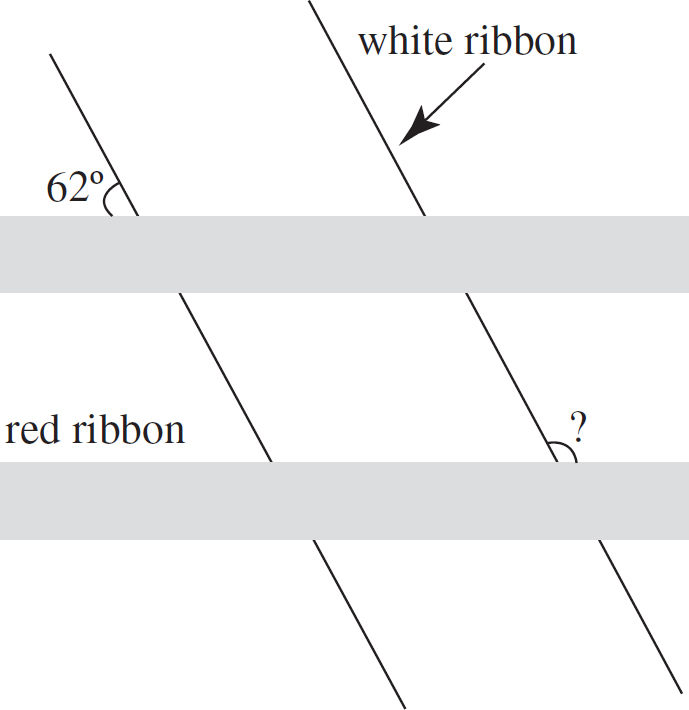
A. 62°
B. 76°
C. 90°
D. 104°
E. 118°
22. In right triangle ΔPRS shown below, Q is the midpoint of PR. What is the length of QR, to the nearest inch?
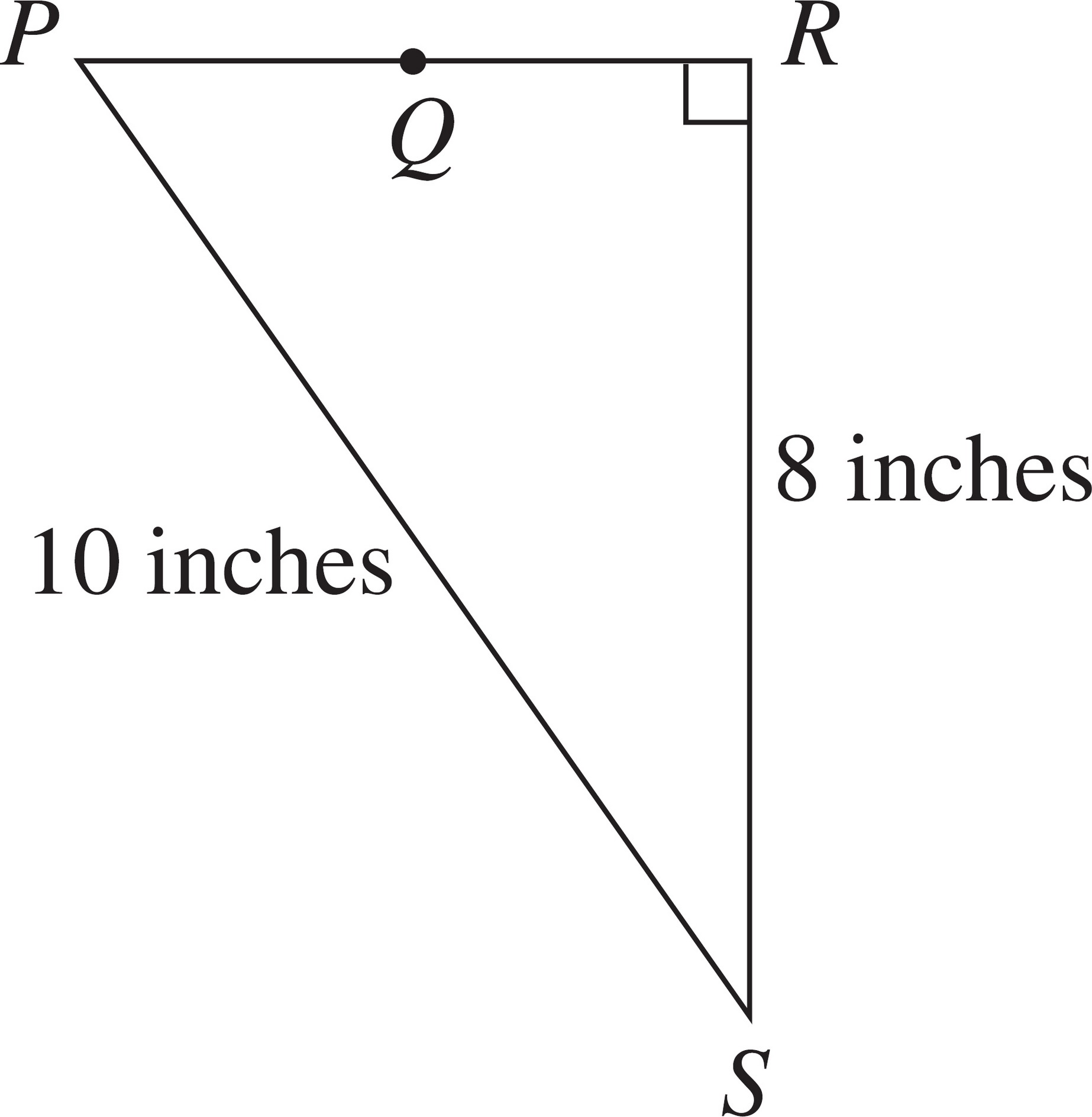
F. 2
G. 3
H. 4
J. 6
K. 36
Use the following information to answer questions 23–24.
Katie notices that the textbooks for her past 3 math courses have the same length and width, but each year’s textbook has more pages and weighs more than the previous year’s textbook. Katie weighs the textbooks, to the nearest 0.1 ounce, for her past 3 math courses and wonders about the relationship between the number of pages in math textbooks and the weights of those textbooks. She graphs the number of pages and corresponding weights of her 3 math textbooks in the standard (x, y) coordinate plane, as shown below, and discovers a linear relationship among these 3 points. She concludes that the equation of the line that passes through these 3 points is y = 0.1x + 2.2.
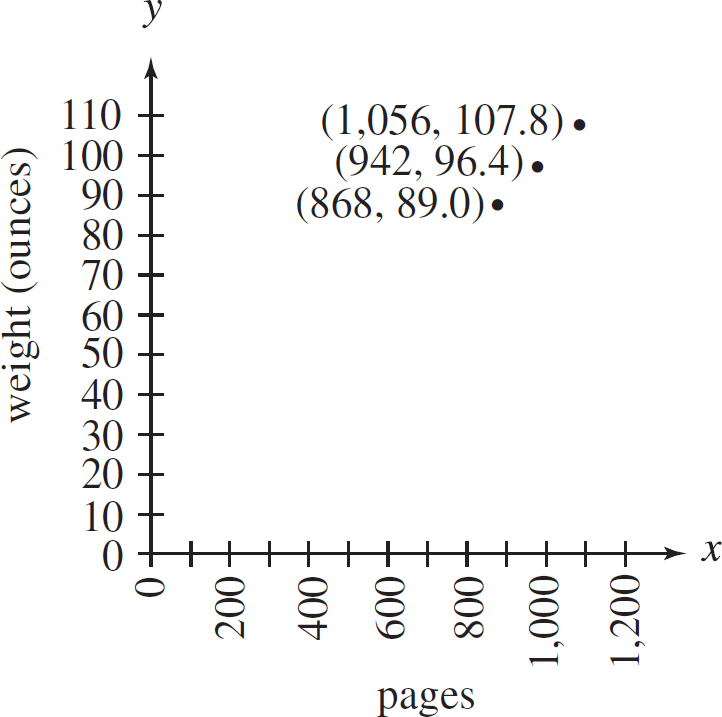
23. How much more, in ounces, does a math textbook with 1,056 pages weigh than one with 868 pages?
A. 18.8
B. 19.8
C. 54.1
D. 77.3
E. 107.8
24. According to Katie’s equation, how much would a math textbook with 1,338 pages weigh, in pounds?
(Note: 16 ounces = 1 pound)
F. 7.4
G. 8.5
H. 10.2
J. 13.6
K. 14.1
25. All line segments that intersect in the polygon below do so at right angles. If the dimensions given are in centimeters, then what is the area of the polygon, in square centimeters?
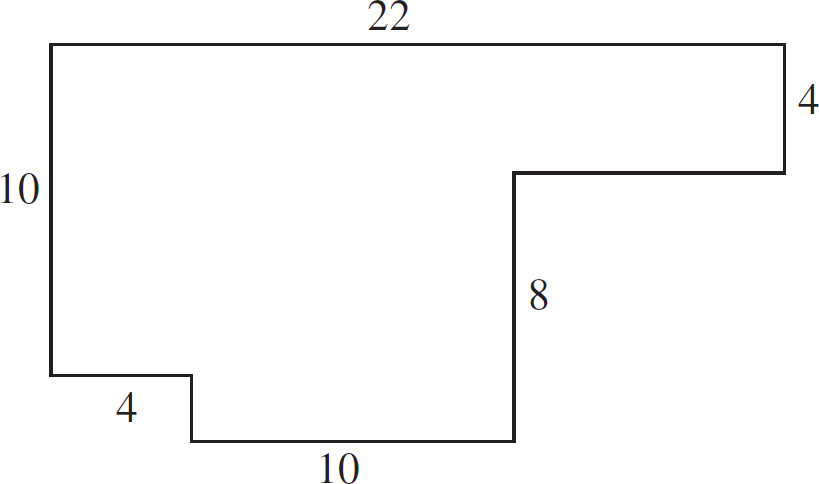
A. 168
B. 176
C. 184
D. 192
E. 200
26. Mr. Baylor spent 6 days grading 996 essays. He averaged 178 essays per day for the first 3 days. Which of the following is closest to his average speed, in essays graded per day, for the final 3 days?
F. 154
G. 157
H. 160
J. 163
K. 166
27. For all values of y, which of the following is equivalent to (y + 1)(y2 − 3y + 2)?
A. y3 + y2 − y − 2
B. y3 + y2 + 2y + 2
C. y3 − 2y2 − y + 2
D. y3 − 2y2 + y − 2
E. y3 + 2y + 2
28. For ∠D in ΔDEF below, which of the following trigonometric expressions has value  ?
?

F. sin D
G. tan D
H. cos D
J. sec D
K. csc D
29. Over the weekend, Shawn bought 22 songs from an online music store. He spent a total of $17.90 on contemporary and classical songs. If contemporary songs cost $0.95 each and classical songs cost $0.75 each, then how many contemporary songs did Shawn buy?
(Note: There is no sales tax charged on these songs because they were purchased online.)
A. 7
B. 9
C. 10
D. 13
E. 15
30. If the operation # is defined as x # y = 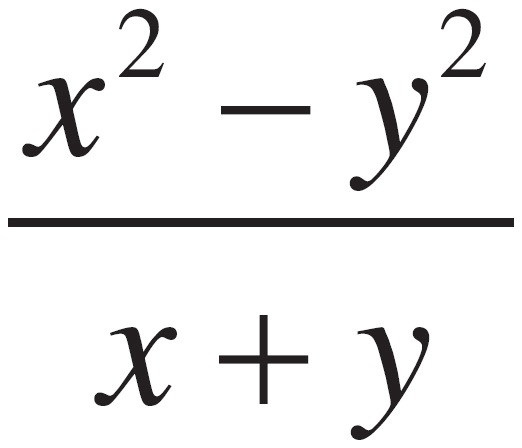 , where x and y are real numbers such that x ≠ −y, then what is the value of (−3)#(−7)?
, where x and y are real numbers such that x ≠ −y, then what is the value of (−3)#(−7)?
F. 10
G. 4
H. 1
J. −4
K. −10
31. Esther is making 2 gallons of punch for a large party. While mixing the punch, she uses
gallons of punch for a large party. While mixing the punch, she uses  gallon of pineapple juice. What fraction of the punch consists of pineapple juice?
gallon of pineapple juice. What fraction of the punch consists of pineapple juice?
A. 
B. 
C. 
D. 
E. 
32. Point O is the center of the circle shown below, and XZ is the diameter of the circle. If XZ = 8 ft, Y lies on the circle, and OX = XY, then what is the area, in square feet, of ΔXYZ ?

F. 4
G. 8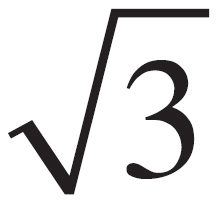
H. 16
J. 32
K. 64
33. Which of the following values provides one of the roots for the equation y2 − 4y − 5 = 7 ?
A. −12
B. −6
C. −2
D. −1
E. 5
34. The plastic model house shown below consists of a right pyramid atop a right rectangular prism. The length and width of the prism and of the pyramid are 20 millimeters. The height of the prism is 16 millimeters, and the height of the pyramid is 12 millimeters. Which of the following is closest to the volume of the plastic model house, in cubic millimeters?
(Note: The volume of a right pyramid is given by  lwh, where l is the length, w is the width, and h is the height. The volume of a right rectangular prism is given by lwh, where l is the length, w is the width, and h is the height.)
lwh, where l is the length, w is the width, and h is the height. The volume of a right rectangular prism is given by lwh, where l is the length, w is the width, and h is the height.)
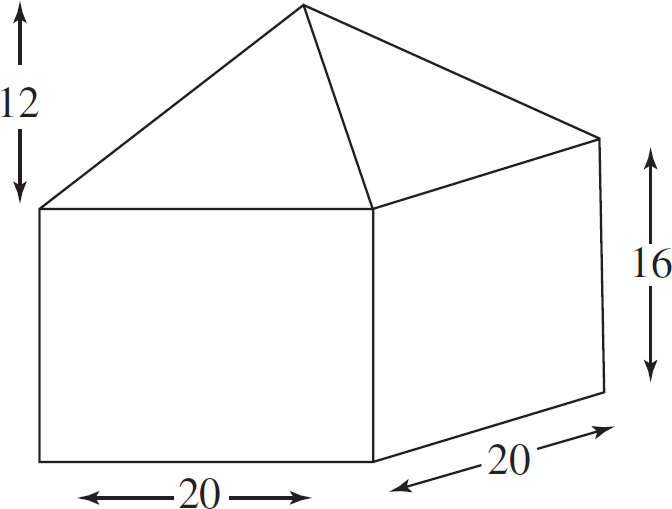
F. 6,900
G. 8,000
H. 9,100
J. 12,300
K. 25,600
35. An isosceles trapezoid has bases of length 5 inches and 11 inches. The area of the trapezoid is 40 square inches. What is the height of the trapezoid, in inches?
A. 4
B. 5
C. 7.5
D. 17.5
E. 35
36. What is the slope of the line that passes through the points (−2, 6) and (3, −9) in the standard (x, y) coordinate plane?
F. 
G. −
H. −
J. −3
K. −5
37. Right triangle ΔWXY is isosceles and has its right angle at Point X. Point Z is collinear with points X and Y, with Y between X and Z. What is the measure of ∠WYZ ?
A. 45°
B. 90°
C. 120°
D. 135°
E. 145°
38. The decimal construction of 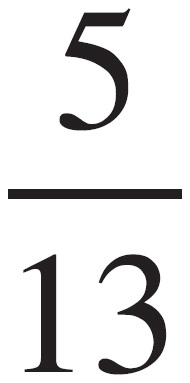 repeats and can be written as 0.384615384615….What is the 99th digit to the right of the decimal point in this decimal construction?
repeats and can be written as 0.384615384615….What is the 99th digit to the right of the decimal point in this decimal construction?
F. 1
G. 3
H. 4
J. 5
K. 6
39. In unit vector notation, u = ai + 5j, v = 2i + bj, and u + v = 4i − 3j. What is the ordered pair (a, b) ?
A. (−2, −5)
B. (2, −8)
C. (2, 5)
D. (4, −8)
E. (5, 2)
40. Which of the following equations represents the vertical asymptote of the function y =  ?
?
F. x = 1
G. x = 
H. x = 3
J. x = 5
K. x = −4
41. In the figure below, JK ∥ MN, and JM and KN intersect at L. Which of the following statements must be true?

A. JK ≅ MN
B. JL ≅ LM
C. ΔJKL ≅ ΔMNL
D. ΔJKL is similar to ΔMNL
E. JM bisects KN
Use the following information to answer questions 42–44.
The Wildcat athletic department at Wilson High School needs to raise $3,000.00 to fill a gap in its annual budget. The athletic department can choose 1 of the 2 options below to raise the needed funds.
Sell “Wildcat baseball caps” option: After paying a one-time fee of $23.00 to rent the necessary equipment, the athletic department can sell baseball caps featuring the school’s logo. The athletic department will buy plain caps and print the school logo on each, at a cost of $3.50 per cap. The athletic department will sell each cap for $5.00.
Sell “Wildcat T-shirts” option: After paying a one-time fee of $19.00 to rent the necessary equipment, the athletic department can sell T-shirts featuring the school’s logo. The athletic department will buy plain T-shirts and print the school logo on each, at a cost of $2.25 per T-shirt. The athletic department will sell each T-shirt for $4.00.
42. For the “Wildcat baseball caps” option, at least how many baseball caps must be sold in order to cover the one-time fee of renting the necessary equipment?
F. 14
G. 15
H. 16
J. 17
K. 23
43. The Wildcat athletic department sold 540 tickets to Friday’s football game. Of those tickets, 60% were adult tickets and the remainder were student tickets. The revenue from these ticket sales had already been factored into the annual budget. Jordan suggested raising the price of the adult tickets $2.00 to help fill the budget gap. If the athletic department had raised the price of each adult ticket $2.00, then by approximately what percent would the budget gap have been filled?
A. 22%
B. 23%
C. 24%
D. 25%
E. 26%
44. The Wildcat athletic department chose the “Wildcat T-shirt” option and successfully filled the budget gap. What is the minimum number of T-shirts the athletic department must have sold?
F. 1,480
G. 1,664
H. 1,709
J. 1,726
K. 1,812
45. The graph of y2 = x is shown in the standard (x, y) coordinate plane below for values of x such that 0 ≤ x ≤ 4. The x- coordinates of points D and E are both 4. What is the area of ΔDEO, in square coordinate units?

A. 
B. 4
C. 8
D. 12
E. 16
46. In ΔXYZ below, the length of XY is 12 centimeters. How long is YZ, to the nearest tenth of a centimeter?
(Note: sin 53° ≈ 0.799, sin 59° ≈ 0.857, sin 68° ≈ 0.927)

F. 9.6
G. 10.3
H. 11.1
J. 12.9
K. 13.9
47. Jacob used the quadratic equation to find that the solutions to an equation are x = 3 ±  , where c is a positive real number. Which of the following expressions gives these solutions as complex numbers?
, where c is a positive real number. Which of the following expressions gives these solutions as complex numbers?
A. 3 ± 1ci
B. 3 ± 2ci
C. 3 ± 4ci
D. 3 ± 8ci
E. 3 ± 16ci
48. Points C and D are on the circle with center O as shown in the figure below. The length of CD is 12 millimeters and the measure of  is 60°. What is the length of the diameter of this circle?
is 60°. What is the length of the diameter of this circle?
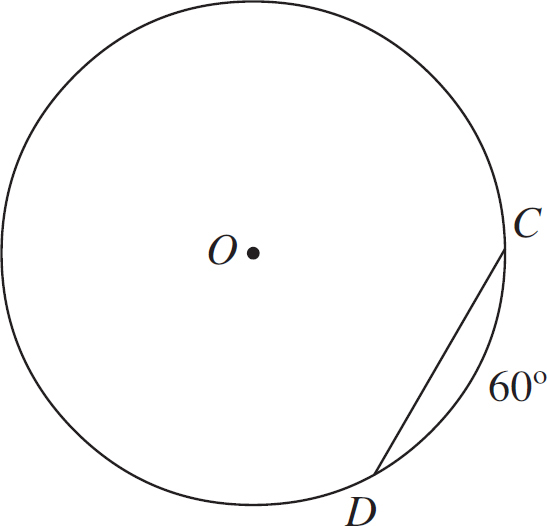
F. 12
G. 16
H. 20
J. 24
K. 28
49. A nylon cord is stretched from the top of a playground pole to the ground. The cord is 25 feet long and makes a 19° angle with the ground. Which of the following expressions gives the horizontal distance, in feet, between the pole and the point where the cord touches the ground?
A. 
B. 
C. 25tan19°
D. 25sin19°
E. 25cos19°
50. What are the coordinates of the center of the circle with the equation x2 + 8x + y2 − 2y + 8 = 0 in the standard (x, y) coordinate plane?
F. (−4, 1)
G. (−1, −4)
H. (1, −4)
J. (4, −1)
K. (4, 1)
51. Scott’s swimming pool has a depth of 8 feet and holds 13,000 gallons of water when full. Because of the warm weather, 10% of the water in the pool evaporates each day. Scott fills the pool with water and comes back the next day to measure the amount of water remaining in the pool. He considers this “Day 1” because it was taken 1 day after the pool was filled, and he labels his measurement as such. The next day, he measures the amount of water again, and he labels the results “Day 2” because it is now 2 days after he filled the pool. If Scott continues, on which day will he measure that the pool is less than half full?
A. 5
B. 6
C. 7
D. 8
E. 9
What is the determinant of the matrix above?
F. −33
G. −21
H. 7
J. 18
K. 47
53. The figure below shows 4 congruent circles, each tangent to 2 other circles and to 2 sides of the square. If the length of a side of the square is 24 inches, then what is the area, in square inches, of 1 circle?

A. 9
B. 9π
C. 36
D. 36π
E. 144
54. Andy has 30 collectible comic books, which he bought in 2005 for $28.95 each. These comic books are currently valued at $34.35 each. Andy will sell these 30 comic books when their combined value is exactly $600.00 more than he paid for them. How much more will the average value per comic book have risen when Andy sells these 30 comic books?
F. $14.60
G. $12.72
H. $10.05
J. $ 7.84
K. $ 5.40
55. Circles with centers G and K intersect at points C and F, as shown below. Points B, G, H, J, K, and D are collinear. The lengths of AC, CE, and HJ are 18 cm, 10 cm, and 3 cm, respectively. What is the length, in centimeters, of BD?
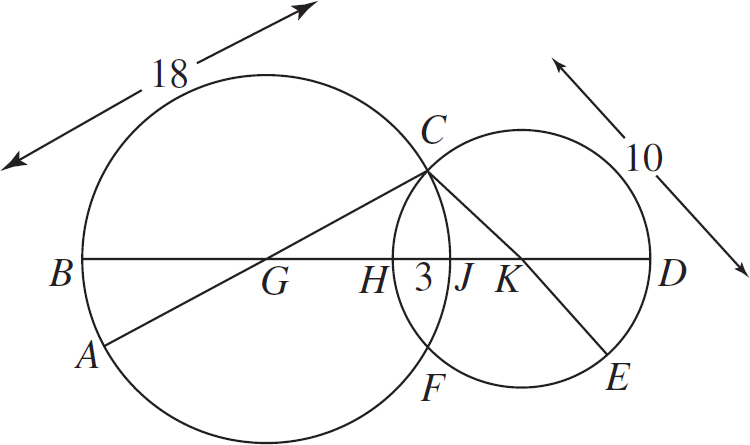
A. 22
B. 25
C. 26
D. 28
E. 29
56. A parabola with vertex (−3, −2) and axis of symmetry y = −2 crosses the y-axis at (0, −2 + 3 ). At what other point does the parabola cross the y-axis?
). At what other point does the parabola cross the y-axis?
F. No other point
G. (0, 2 + 3 )
)
H. (0, 2 − 3 )
)
J. (0, −2 − 3 )
)
K. Cannot be determined from the given information
57. If z ≠ 4 and z ≠ −4, then which of the following is equivalent to the expression  ?
?
A. 
B. 
C. 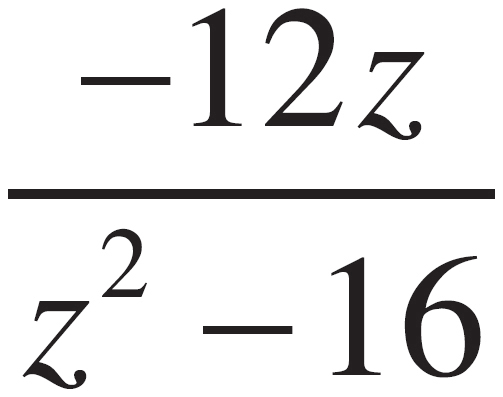
D. 
E. 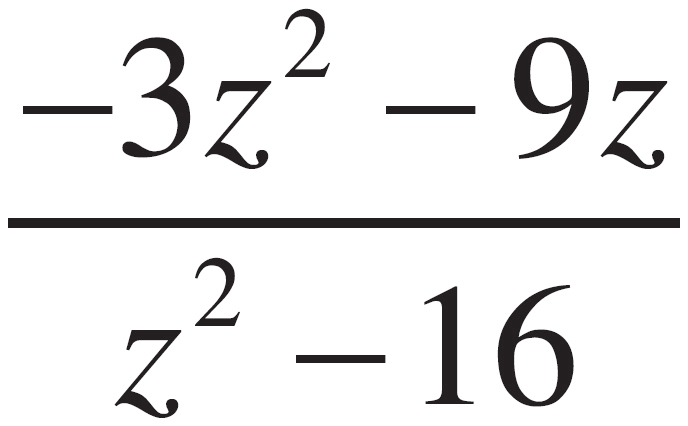
58. The point (a, b) is on the terminal side of an angle with radian measure θ. Which of the following is equal to the tangent of π + θ?

F. 
G. 
H. 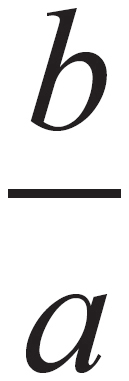
J. −b
K. b
59. The nth term of an arithmetic sequence, an, is given by an = a1 + dn − d, where a1 is the 1st term, and d is the common difference between terms. Which of the following expressions gives d in terms of an, a1, and n ?
A. 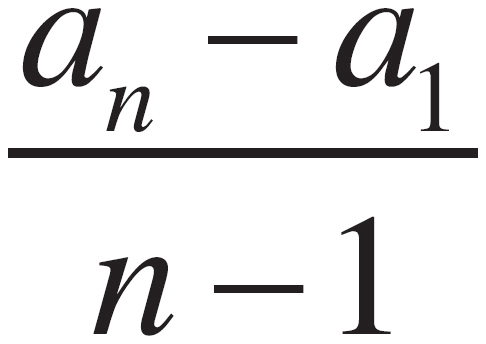
B. 
C. 
D. 
E. an − a1 − n
60. A deck of 54 cards has 4 suits, each with 13 cards and 2 jokers. Each suit has cards labeled 2 through 10, and an ace, jack, queen and king. Susan draws five cards without replacement. What is the probability that Susan draws a ten, jack, queen, king, and then ace, all of the same suit and in that order?
F. 
G. 
H. 
J. 
K. 
END OF TEST 2
STOP! DO NOT TURN THE PAGE UNTIL TOLD TO DO SO.
DO NOT RETURN TO A PREVIOUS TEST.

READING TEST
35 Minutes—40 Questions
DIRECTIONS: There are four passages in this test. Each passage is followed by several questions. After reading a passage, choose the correct answer to each question and fill in the corresponding oval on your answer document. You may refer to the passages as often as necessary.
Passage I
PROSE FICTION: This passage is adapted from the novel Oklahoma Sunrise by Jack Elwyn Prouty (©2007 Jack Elwyn Prouty).
1. Which of the following statements best expresses Rebecca’s feelings during her visit to the fields, as expressed in lines 1–42 ?
A. Overjoyed by the idea of ownership
B. Connected with the land and her heritage
C. Dismayed by her looming financial problems
D. Exhausted and frustrated from hard work
2. The word that in line 28 most directly refers to:
F. “someday, she would return” (lines 31–32).
G. “far away from the soil” (lines 26–27).
H. “it would move on once it had ascertained that she was no flower” (lines 48–49).
J. “sometimes one bad year will follow another” (lines 24–25).
3. The main purpose of the information in lines 30–42 is to explain why Rebecca believes that the land is:
A. her rightful heritage, passed down through her family, whose hard work forms the foundation for her claim.
B. an entity unto itself, alive and free, and beyond the control of anyone.
C. not worth the trouble that she and her predecessors have gone to in an attempt to claim it.
D. beautiful, whether wild or cultivated, and filled with creatures that create a harmonious whole.
4. In the first four paragraphs (lines 1–42), the narrator describes all of the following aspects of Rebecca’s surroundings EXCEPT the:
F. different scents in the evening air.
G. feel of freshly plowed earth.
H. reason her family had left the area.
J. best time of day to visit the fields.
5. The passage can best be described as a fictional depiction of a woman’s impression of the land that:
A. uses rich, suggestive detail to show that the land is a vital and cherished component of her personal life and family heritage.
B. reveals a painful family history and explains why her ancestors had opted to give up all claims on the land.
C. offers metaphors and similes to convey a deeper meaning than the one suggested by the events narrated in the story.
D. explains exactly how one family can lose everything due to circumstances beyond the control of its members.
6. The narrator’s statement in lines 62–63 (“Without the former, she could never face the latter) most directly refers back to Rebecca’s:
F. opinion about different times of the day and how that changes the atmosphere (lines 15–21).
G. concern about the bee described in the fifth paragraph (lines 43–51).
H. anxiety over financial matters being outweighed by her love of the land (lines 54–61).
J. enjoyment of the scents described in the second paragraph (lines 3–14).
7. One of the main purposes of the last two paragraphs (lines 52–71) is for the narrator to describe Rebecca’s attitude towards the land in a way that:
A. explains the importance of the stranger’s land that is mentioned previously in the passage.
B. purposefully identifies the mistakes made by Rebecca’s parents, referenced earlier in the passage, which Rebecca cannot correct.
C. deepens the reader’s understanding of the challenges and rewards the land presents to Rebecca.
D. invites the reader to draw a parallel between Rebecca and the land itself and perhaps the reader as well.
8. The point of view from which the passage is told can best be described as that of a narrator who:
F. is aware of what Rebecca is thinking and feeling.
G. suspects that Rebecca is not sincere in her plans.
H. is personally involved in the events being described.
J. is Rebecca’s close relative who didn’t move.
9. As it is used in line 34, the word wild most nearly means:
A. unconquerable.
B. unrestrained.
C. uncultivated.
D. irrepressible.
10. When Rebecca realized that “a bee landed on her cheek” (line 46), her first response is to:
F. brush it away from her face.
G. worry that it might sting her.
H. hope that it will fly away.
J. flinch, then try not to respond.
Passage II
SOCIAL SCIENCE: This passage is adapted from the article “Illuminating the Dark Ages” by Krista Correa (©2003 Krista Correa).
11. In the passage, which of the following scholars most directly contributed to the popularity of the term “Dark Ages”?
A. Jordan
B. Lindberg
C. Petrarch
D. Numbers
12. The passage most directly credits which of the following activities with the ability to flourish during the Middle Ages?
F. The construction of free-standing domes
G. Skilled and detailed stonework
H. Three-dimensional, realistic art
J. The field of mathematics
13. The passage indicates that, contrary to the historians with a traditional view of the Middle Ages, scholars today believe the Middle Ages were:
A. a transitional period between the classical era and the modern.
B. an era in which significant scientific discoveries were made.
C. an epoch that suffered a decline in learning, art, and architecture.
D. a time when much of the world lived in ignorance.
14. The passage states that an accurate picture of the Middle Ages will likely develop as a result of:
F. reconsidering existing evidence and discovering new evidence.
G. relying on written documents from the Renaissance.
H. new excavations throughout the European countryside.
J. disregarding all Renaissance accounts.
15. According to the passage, people during the Middle Ages did NOT:
A. keep written documents.
B. study advanced mathematics.
C. know how to carve stone well.
D. believe the world was flat.
16. The main purpose of the first paragraph (lines 1–13) is to:
F. compare the advances of the Renaissance and the classical period with the failings of the Middle Ages.
G. list all of the terms used to describe the period between the fifth and fourth century.
H. demonstrate that Petrarch and other writers of the Renaissance lived in a cultural wasteland.
J. introduce the era under discussion and some of the ways it has been described.
17. The passage identifies which of the following as two areas in which learning truly did go into decline during the Middle Ages?
A. Symbolic art and architecture
B. Astronomy and mathematics
C. Dome-building and three-dimensional art
D. Stonework and science
18. It can reasonably be inferred from the first paragraph (lines 1–13) that Renaissance writers such as Petrarch believed that their work would benefit from:
F. association with the classical era.
G. an in-depth study of science.
H. the creation of a well-educated middle class.
J. the new culture of the Renaissance.
19. As it is used in line 5, the word coined most nearly means:
A. counterfeited.
B. plagiarized.
C. spent.
D. created.
20. It can reasonably be inferred from the fourth and fifth paragraphs (lines 33–54) that before the work of modern scholars such as Numbers and Lindberg, most people tended to see educational pursuits during the Middle Ages as:
F. insignificant.
G. scientific.
H. advanced.
J. well-documented.
Passage III
HUMANITIES: Passage A is adapted from the essay “Much Ado About Shakespeare” by Arthur Coyle Thompson. Passage B is adapted from the essay “No Kidding This Theory Is Looney” by Amanda Combs Truelove.
Passage A

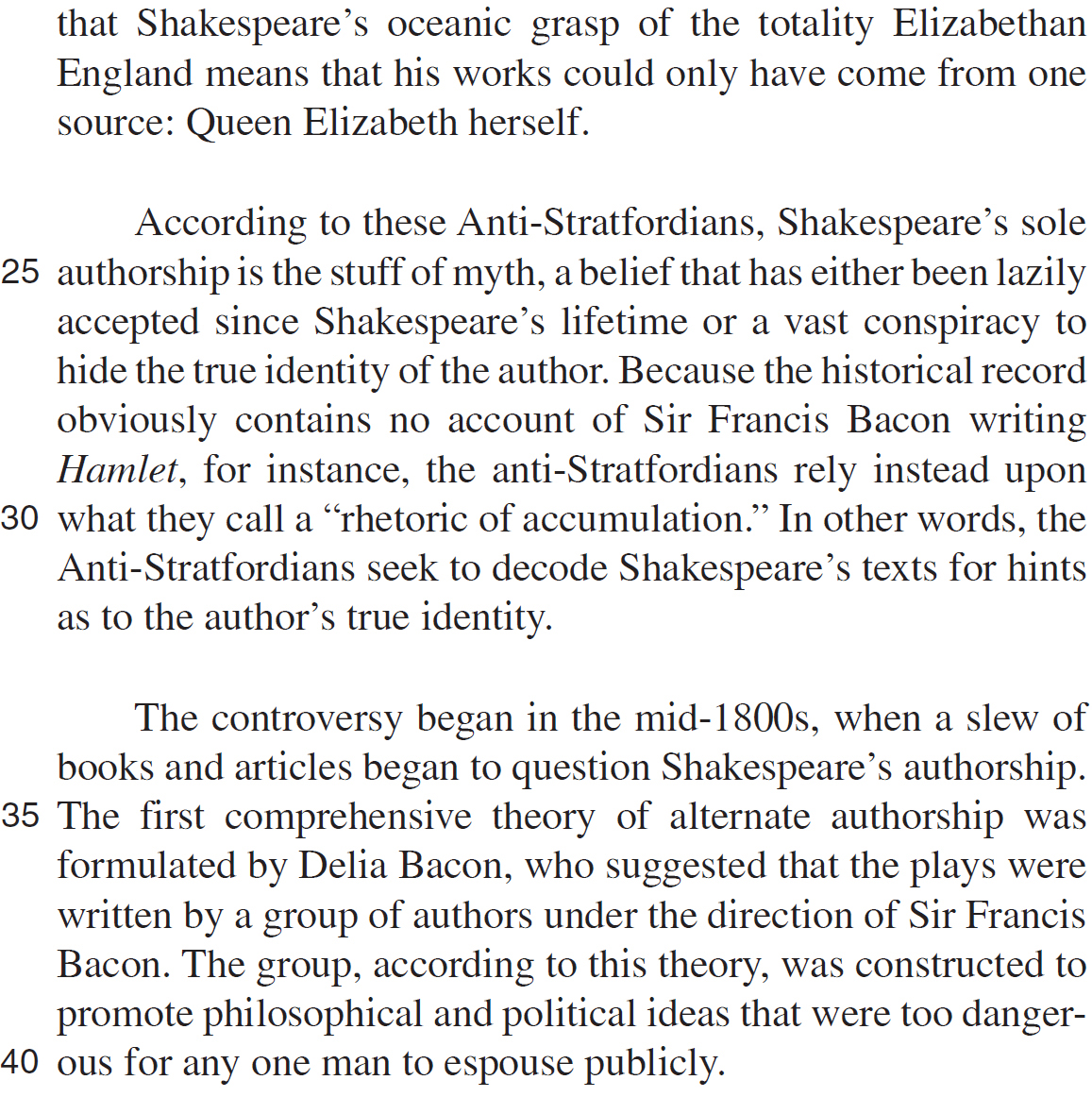
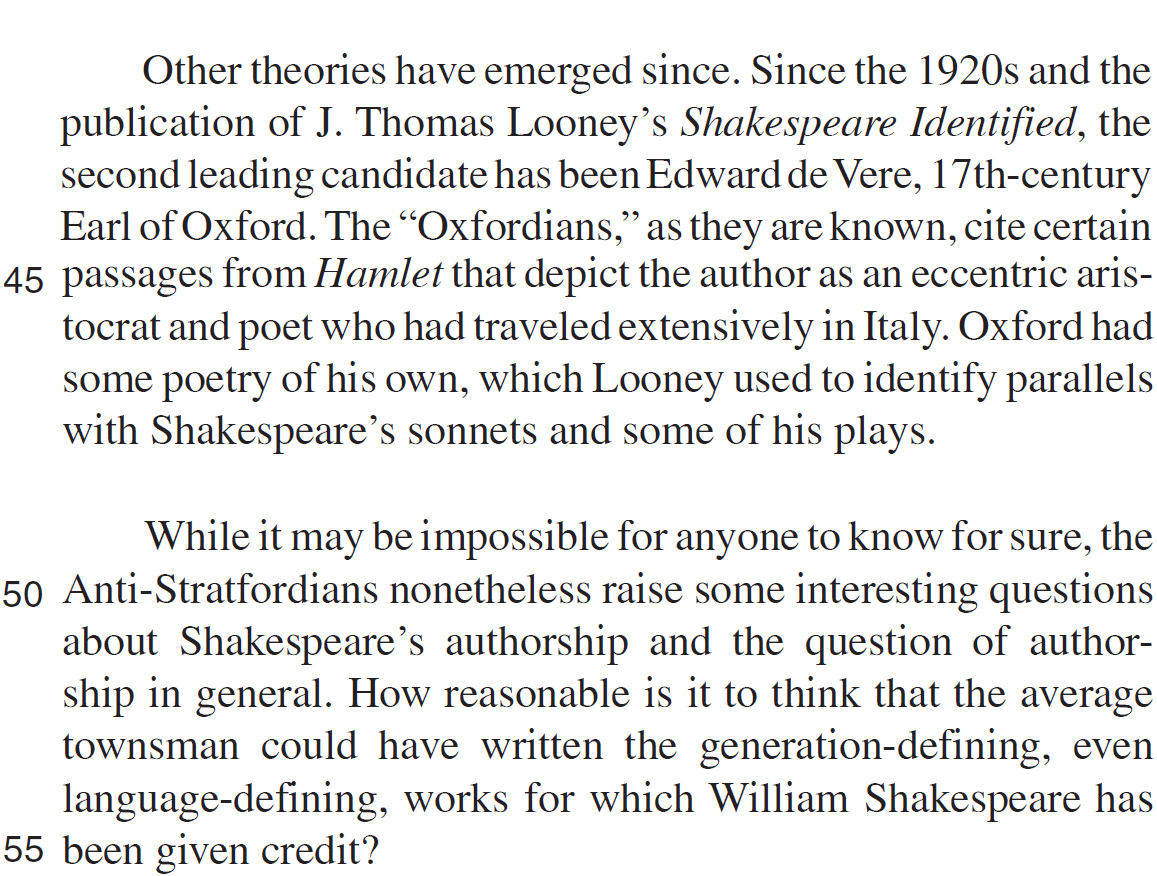
Passage B
Questions 21–24 ask about Passage A.
21. Based on the passage, the primary reason that some critics and scholars doubt the identity of the playwright William Shakespeare is that:
A. the most accomplished playwrights in the 16th century were also the most successful and wealthy.
B. a man of Shakespeare’s relatively humble station is not likely to have produced works with such breadth.
C. some of the ideas that Shakespeare’s plays advanced were too dangerous to appear in novels.
D. some readers in the 19th century wanted to connect the plays of Shakespeare to their own lives.
22. According to Thompson, critics cite Queen Elizabeth as the possible author of Shakespeare’s plays because the plays:
F. have unusually strong female characters.
G. demonstrate an intimate knowledge of natural sciences.
H. depict the era of Elizabeth’s reign with notable breadth.
J. were popular among dukes and other royalty of the time.
23. Thompson refers to Shakespeare as “the average townsman” (lines 52–53) in order to suggest that Shakespeare:
A. may have been too unsophisticated to have written such sophisticated plays.
B. was active in civic affairs as well as in theatrical ones.
C. was probably too well-liked by his neighbors to be revealed as a fraud.
D. may have disguised himself in his daily life in Stratford-upon-Avon.
24. As it is used in line 21, the word oceanic most nearly means:
F. natural.
G. informal.
H. salty.
J. comprehensive.
Questions 25–27 ask about Passage B.
25. Based on Truelove’s account, the main reason that Shakespeare’s authorship is difficult to understand is that Shakespeare:
A. was only one of many authors who wrote under the name Shakespeare.
B. appeared in the literary world before plays were considered serious works of art.
C. is a genius who cannot be characterized in normal terms.
D. disapproved of royalty and other nobles without sufficient knowledge of how they lived.
26. According to Truelove, the anti-Stratfordians give a classist account of Shakespeare’s authorship in that they:
F. insist that only a royal or noble could have written a good play.
G. assume that literary ability is based on the author’s economic class.
H. disapprove of their own low-income students.
J. show that Shakespeare did not earn sufficient royalties from his plays.
27. Truelove elaborates on the faultiness of the “rhetoric of accumulation” by suggesting that:
A. the anti-Stratfordians have been focusing on the wrong texts in their analysis.
B. the anti-Stratfordians have not sufficiently spoken of economics in their books and articles.
C. the evidence used for such claims is not as meaningful as anti-Stratfordians believe.
D. the evidence for Francis Bacon’s authorship is far less compelling than the evidence for Edward de Vere’s.
Questions 28–30 ask about both passages.
28. One of the most obvious differences between Thompson’s and Truelove’s point of view is that Thompson:
F. believes the theories of the anti-Stratfordians, while Truelove is more compelled by the theories of the Oxfordians.
G. criticizes the authors he describes, while Truelove is more interested in finding the merits in Looney’s and Bacon’s arguments.
H. doubts the claims of the anti-Stratfordians, while Truelove considers them interesting intellectual exercises.
J. presents a skeptical view on Shakespeare’s authorship, while Truelove criticizes such skepticism as misguided.
29. By which of the following means does Truelove disagree with the theories presented in Thompson’s passage?
A. Personal attack and intellectual banter
B. Literary critique and argumentative discrediting
C. Enthusiastic support and righteous anger
D. Historical data and archival research
30. Based on these two passages, which pair of phrases best compares Thompson’s relationship to alternative theories of Shakespeare’s authorship and Truelove’s relationship to alternative theories of Shakespeare’s authorship?
F. Economic snob versus champion of averageness
G. Dramatic critic versus theater lover
H. Wrongheaded fool versus serious thinker
J. Curious skeptic versus firm doubter
Passage IV
NATURAL SCIENCE: This passage is adapted from the article “Does an Amoeba Have a Choice?” by Wilbur Stewart (©2007 WIlbur Stewart).
31. According to the author of the passage, “free will” describes behavior such as:
A. falling in love by a series of natural and biological processes.
B. the study of pattern behavior to understand criminal behavior.
C. the choice of one mate based on a mutual emotional connection.
D. group efforts by all members of a city to improve that city.
32. Based on the passage, what relationship does the recent discovery described in the third paragraph (lines 30–34) have to the electro-chemical theory?
F. It directly supports the electro-chemical theory.
G. It supports another theory that is connected to the electro-chemical theory.
H. It undermines the central claims of the electro-chemical theory.
J. It is unrelated to the electro-chemical theory.
33. The author characterizes scientific contributions to police work as:
A. charming but ultimately useless.
B. mundane but logically unconvincing.
C. alarming but theoretically persuasive.
D. new and potentially helpful.
34. The supporters of the electro-chemical theory claim that humans are like particles in that both:
F. are ultimately driven to action by biological impulses.
G. are potentially capable of conscious decision-making.
H. can more adequately be understood in groups than individually.
J. respond to outside stimuli without intermediate thought.
35. In terms of where and how frequently they occur, electrical impulses are described by the author of the passage as:
A. possible in humans and animals but not in other types of matter.
B. common to humans, animals, and other types of matter.
C. present in cellular interactions but absent from human interactions.
D. the basis of a theory of group activity for non-human matter.
36. The chemists and physicists define biological impulses as:
F. apparently unconnected to decisions based in free will.
G. apparently central to whether humans exercise free will.
H. the basis for chemical impulses, which in turn cause electrical impulses.
J. caused by chemical impulses, which are caused by electrical impulses.
37. Lines 26–30 are best characterized as describing an explanation that:
A. slowly developed as the primary method of childrearing among all higher-level organisms.
B. rapidly emerged as the leading cause of the successful evolution of lower-level animals.
C. alternatively offers a reason for behavior that had previously been attributed to free will.
D. recently undermined the traditional belief that human behavior was biologically motivated.
38. The main point of the sixth paragraph (lines 71–81) is that:
F. the new theories discussed in the passage have been put into practice effectively in at least one field.
G. recent research has indicated that academic theories tend to be difficult to put into practice.
H. academic theories can be evaluated more fully when they are put into practice.
J. police work has relied on academic help since before the debates over free will.
39. The passage states that in response to the suggestion that the tendency to remain with a single mate demonstrates humanity’s free will, evolutionary biologists:
A. added several new elements to their theory.
B. accepted that their initial idea was deeply flawed.
C. redefined the term “free will” to fit their theory.
D. suggested an alternative interpretation of pair-bonding.
40. Lines 12–17 mainly emphasize what quality?
F. Confidence
G. Uncertainty
H. Ignorance
J. Contentment
END OF TEST 3
STOP! DO NOT TURN THE PAGE UNTIL TOLD TO DO SO.
DO NOT RETURN TO A PREVIOUS TEST.

SCIENCE TEST
35 Minutes–40 Questions
DIRECTIONS: There are several passages in this test. Each passage is followed by several questions. After reading a passage, choose the correct answer to each question and fill in the corresponding oval on your answer document. You may refer to the passages as often as necessary.
You are NOT permitted to use a calculator on this test.
Passage I
The apoptotic index (AI) for a group of dividing cells is calculated as follows:

Figure 1 shows the AI for a culture of fibroblast cells as a function of the surrounding concentration in parts per million (ppm) of a cell toxin.

Figure 1

Figure 2
One thousand actively dividing fibroblast cells in culture were studied. Figure 2 shows the distribution of the cells in each of the stages of the dividing cell cycle.
Electron micrographs were taken of the fibroblasts in culture. Figure 3 shows an example of cells in each of the 4 stages of the dividing cell cycle. Although the cells are not arranged in the sequence of the cell cycle, each stage is shown only once.

Figure 3
1. Which cell in Figure 3 is most likely in the stage of the cell cycle during which cytokinesis is occurring as mitosis nears completion?
A. Cell 1
B. Cell 2
C. Cell 3
D. Cell 4
2. Based on Figure 1, of the fibroblast cells that are surrounded by a toxin concentration of 90 ppm, the percent that are in apoptosis most likely is represented by which of the following ranges?
F. Less than 0.5%
G. Between 0.5% and 0.6%
H. Between 0.6% and 0.7%
J. Greater than 0.7%
3. Which of the following cells in Figure 3 is most likely in the first stage of the actively dividing cell cycle?
A. Cell 1
B. Cell 2
C. Cell 3
D. Cell 4
4. According to Figure 2, how did the number of fibroblast cells in stage G2 compare with the number of cells in stage S? The number in G2 was approximately:
F. 2 times as great as the number in S.
G. 3 times as great as the number in S.
H.  as great as the number in S.
as great as the number in S.
J.  as great as the number in S.
as great as the number in S.
5. Based on Figure 2, of the fibroblast cells that were in the actively dividing cell cycle, the proportion that were in G1 is closest to which of the following?
A. 
B. 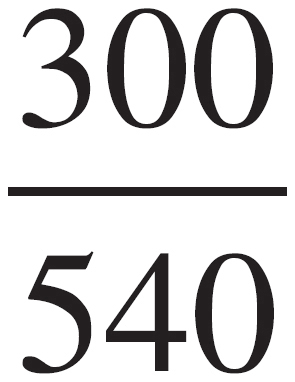
C. 
D. 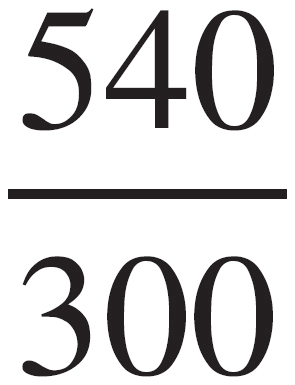
6. If there are 100,000 cells in the culture at a toxin concentration of 30 ppm, which of the following expressions correctly calculates the approximate number of cells undergoing apoptosis?
F. 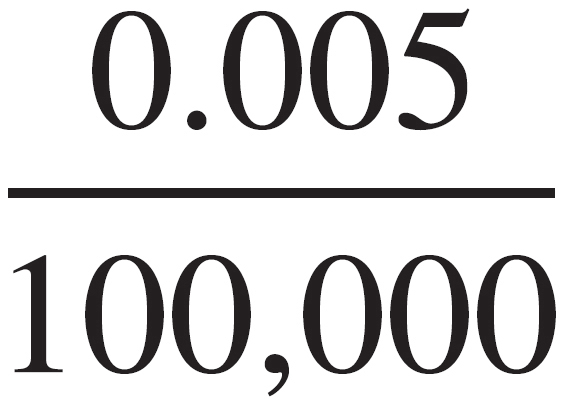
G. 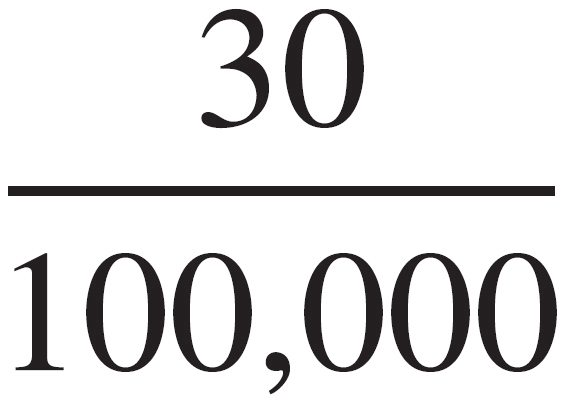
H. 100,000(0.005)
J. 30(0.005)
Passage II
A polymorphism is the persistent occurrence of different appearances for a particular trait in a species. All humans have slight differences in their genotypes (genetic code) that result in different phenotypes (observable characteristics). Genetic polymorphisms are persistent variations in gene sequences at a particular location in chromosomes, such as those accounting for different blood types. Variations that cannot be observed with the naked eye require techniques such as capillary electrophoresis (the separation of genetic or protein material based on charge characteristics using an electric field).
The label on a vial of blood from a hospital patient was lost. The sample just tested positive for sickle cell anemia. Sickle cell anemia is caused by a mutation in the gene that affects the production of normal hemoglobin. An individual with a single mutated allele has sickle cell trait, a condition in which both normal and sickle cells are produced. Only an individual with two mutated alleles will develop sickle cell anemia. The unidentified sample was traced to a room with 4 patients who were subsequently tested to determine the source of the initial vial.
Tests and Results
Smears of the blood from the unidentified patient (P) and from the 4 newly tested patients (1–4) were observed under the microscope for the appearance of the blood cells. Researchers noted the presence of any sickle or target cells within the smear. Results are shown in Table 1.
|
Table 1 |
|
|
Patient |
Blood smear findings |
|
P 1 2 3 4 |
Sickle cells Target cells Sickle cells Normal blood cells Sickle cells |
Serum was isolated from the blood of Patient P and from Patients 1–4 and placed in separate tubes. A buffer was added to each vial to establish a pH of 8.6. One at a time, samples from each tube were injected into the capillary electrophoresis device set at 7.5 kilovolts (kV) to separate the types of hemoglobin present into peaks. The hemoglobin proteins composing a peak had similar charge characteristics. Figure 1 shows the peaks that resulted from all 5 samples.

Figure 1
7. Sickle cell anemia is caused by a mutation in the gene that produces beta-globin, a protein necessary for the production of normal hemoglobin. The normal allele is denoted A, while the mutated allele is denoted S. An individual with the genotype AS has sickle cell trait, a condition in which both normal and sickle cells are produced. Only an individual with two mutated alleles will develop sickle cell anemia. Based on Table 1 and Figure 1, which of the following patients likely have the genotype SS?
I. Patient P
II. Patient 2
III. Patient 4
A. I only
B. I and II only
C. II and III only
D. I, II, and III
8. Are the data in Table 1 consistent with the hypothesis that Patient 4 and Patient P are the same person?
F. Yes; Patient 4 has the same blood cell appearance as Patient P.
G. Yes; Patient 4 has different blood cell appearance as Patient P.
H. No; Patient 4 has the same blood cell appearance as Patient P.
J. No; Patient 4 has different blood cell appearance as Patient P.
9. What is the most likely reason that the serum samples were treated with a buffer to bring pH to 8.6 ?
A. Hemoglobin protein breaks down at that pH.
B. All bacteria and viruses are destroyed at that pH.
C. Capillary electrophoresis separation of hemoglobin functions best at that pH.
D. Capillary electrophoresis separation of hemoglobin does not function at that pH.
10. Individuals with sickle cell traits also carry a resistance to malaria. Which of the following best explains the geographic differences in the prevalence of sickle cell anemia? Compared to locations with minimal incidence of mosquito borne illness. locations with high rates of mosquito borne illness likely have a:
F. higher incidence of sickle cell anemia because individuals with sickle cell trait are better suited to the environment and, therefore, are more likely to pass this trait on to offspring.
G. lower incidence of sickle cell anemia because individuals with sickle cell trait are better suited to the environment and, therefore, are more likely to pass this trait on to offspring.
H. higher incidence of sickle cell anemia because individuals with sickle cell trait are less suited to the environment and, therefore, less likely to pass this trait on to offspring.
J. lower incidence of sickle cell anemia because individuals with sickle cell trait are less suited to the environment and, therefore, less likely to pass this trait on to offspring.
11. According to Figure 1, the pattern of protein peaks produced by serum from Patient P most closely resembles the pattern produced by the serum sample from:
A. Patient 1.
B. Patient 2.
C. Patient 3.
D. Patient 4.
12. Based on Figure 1, the hemoglobin proteins in which of the following 2 peaks were most likely closest in charge characteristic?
F. W and X
G. W and Z
H. X and Y
J. X and Z
13. During the capillary electrophoresis, all the hemoglobin proteins started with some quantity of charge before migrating from left to right in Figure 1. Therefore, the proteins resulting in peaks furthest to the left must have been the most:
A. negative, as opposite charges attract each other.
B. negative, as opposite charges repel each other.
C. positive, as opposite charges attract each other.
D. positive, as opposite charges repel each other.
Passage III
Carboxylic acids are organic compounds containing a carboxyl (–COOH) group. These molecules are acidic since they are able to donate protons in solution. The acidity and other physical properties of carboxylic acids are affected by the composition of the atoms bound to the carboxyl group. Table 1 lists the freezing points and boiling points for several carboxylic acids.

Figure 1 shows how the vapor pressure (in mm Hg) of 3 carboxylic acids changes as a function of temperature.

Figure 1
Figure 2 shows how the vapor pressure of the same 3 carboxylic acids changes as a function of concentration when mixed with water at 20°C.

Figure 2
14. A solution of NaOH neutralizes propionic acid. Is the NaOH solution acidic or basic?
F. Basic; the molecules in the NaOH solution are able to donate protons in solution.
G. Acidic; the molecules in the NaOH solution are able to accept protons in solution.
H. Basic; the molecules in the NaOH solution are able to accept protons in solution.
J. Acidic; the molecules in the NaOH solution are able to donate protons in solution.
15. Which of the carboxylic acids listed in Table 1 has the highest melting point?
A. Propionic acid
B. Valeric acid
C. Acetic acid
D. Formic acid
16. According to Figure 2, the vapor pressure of a 0.5 mole fraction solution of water in formic acid is closest to the vapor pressure of which of the following water in formic acid solutions?
F. 0.9 mole fraction
G. 0.8 mole fraction
H. 0.6 mole fraction
J. 0.4 mole fraction
17. According to Figure 2, as the mole fraction of water in an acetic acid and water solution increases from 0 to 1, the vapor pressure:
A. decreases, then increases.
B. increases, then decreases.
C. decreases only.
D. increases only.
18. CH3(CH2)4COOH is the chemical formula for the carboxylic acid named hexanoic acid. Based on Table 1, this compound most likely boils at a temperature:
F. lower than 160°C.
G. between 200°C and 220°C.
H. between 220°C and 240°C.
J. higher than 240°C.
19. According to Figure 1, does acetic acid or formic acid resist vaporization more at 60°C ?
A. Formic acid, because formic acid has the lower vapor pressure.
B. Formic acid, because formic acid has the higher vapor pressure.
C. Acetic acid, because acetic acid has the lower vapor pressure.
D. Acetic acid, because acetic acid has the higher vapor pressure.
Passage IV
A solenoid is a device that creates a magnetic field from electric current and can be used to exert a force on a nearby bar magnet to activate a mechanical device.
Scientists performed experiments on the solenoid apparatus shown in Figure 1.

Figure 1
A wire carrying current from a voltage source was coiled into a hollow cylinder to form a solenoid with a length of XY. A solid cylinder bar magnet was suspended near the top of the solenoid as shown in Figure 2.

Figure 2
When the voltage source was turned on, the solenoid exerted a measurable force on the suspended bar magnet.
The bar magnet was attached to a digital suspension scale that measured weight in newtons (N). With the voltage source off, the scale read 4.7 N. Prior to the start of each experimental trial, the scale was adjusted to read 5.0000 N.
Experiment 1
The scientists applied various levels of voltage in volts (V) to the circuit and recorded the weight indicated by the suspension scale for each trial. Results were recorded in Table 1.
|
Table 1 |
|
|
Voltage (V) |
Weight (N) |
|
7.25 8.00 8.75 |
5.0078 5.0095 5.0113 |
Experiment 2
The scientists removed the bar magnet, inverted it, and reattached it to the suspension scale so that the opposite end was now facing the solenoid. The procedures of Experiment 1 were repeated and results were recorded in Table 2.
|
Table 2 |
|
|
Voltage (V) |
Weight (N) |
|
7.25 8.00 8.75 |
4.9922 4.9905 4.9887 |
Experiment 3
The bar magnet was returned to the original alignment it was in during Experiment 1. The length XY of the solenoid coil was varied while a voltage of 8.00 V was applied to the circuit. Weights were recorded in Table 3.
|
Table 3 |
|
|
Solenoid length XY (cm) |
Weight (N) |
|
9.50 8.50 7.50 |
5.0105 5.0131 5.0169 |
20. Based on the results of Experiments 1 and 3, the length XY of the solenoid coil in Experiment 1 was most likely:
F. shorter than 7.50 cm.
G. between 7.50 cm and 8.50 cm.
H. between 8.50 cm and 9.50 cm.
J. longer than 9.50 cm.
21. In Experiments 1 and 2, the orientation of the bar magnet relative to the solenoid opening determined which of the following?
A. Solenoid length XY
B. Direction of the force exerted by the solenoid on the bar magnet
C. Density of the bar magnet
D. Magnetic field strength of the solenoid
22. Which of the following provides the best explanation for the results of Experiment 3 ? The force exerted on the bar magnet by the solenoid magnetic field:
F. decreased as the voltage applied to the circuit decreased.
G. increased as the voltage applied to the circuit decreased.
H. decreased as the length XY of the solenoid decreased.
J. increased as the length XY of the solenoid decreased.
23. Suppose the scientists maintained the same bar magnet orientation in Experiment 3 as in Experiment 2. Based on the results of Experiments 1 and 2, with the solenoid length XY equal to 9.50 cm, the weight on the scale would most likely have been:
A. 5.0169
B. 5.0105
C. 4.9895
D. 4.9831
24. Prior to all experiments, the suspension scale was calibrated to read exactly 0 N when nothing was attached. Once the bar magnet was attached, the scientists made which of the following adjustments to the scale reading for each of the experimental trials?
F. The displayed weight was adjusted downward by approximately 1.3 N.
G. The displayed weight was adjusted upward by approximately 1.3 N.
H. The displayed weight was adjusted downward by approximately 0.3 N.
J. The displayed weight was adjusted upward by approximately 0.3 N.
26. In which of the following trials does the solenoid exert the force with the greatest magnitude on the suspended bar magnet?
F. Repeating Experiment 1 with a voltage of 7 V.
G. Repeating Experiment 2 with a voltage of 6 V.
H. Repeating Experiment 1 with a voltage of 8 V.
J. Repeating Experiment 2 with a voltage of 9 V
Passage V
Average global temperature is influenced by multiple different factors and has gone through significant changes throughout the history of Earth.
Global temperature affects Earth’s oceans. In general, as the average global temperature increases, glacial and continental ice coverage decreases from melting. This combined with the thermal expansion of the oceans results in rising sea levels. The sea level present at any given time over the past 150,000 years can be estimated from sedimentary rock layer analysis. Figure 1 shows for the years listed the difference in average global sea level compared to what has been the average temperature value from 1961 through 1990.
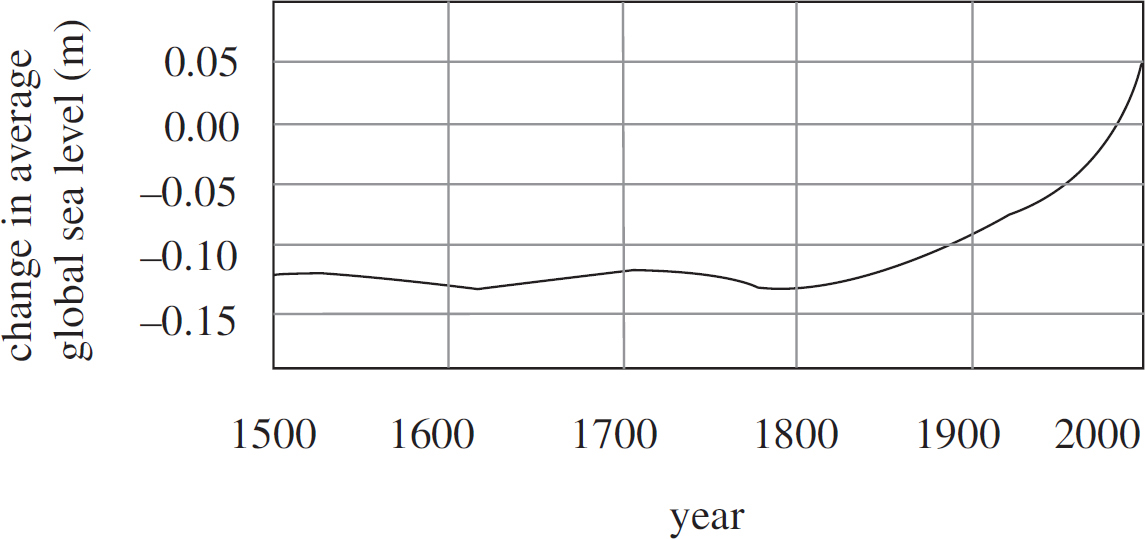
Figure 1
Figure 1 adapted from “Intergovernmental Panel on Climate Change Fourth Assessment Report 2007.”
Figure 2 shows the change in both the average global temperature and average global sea level from the present. The change in average global sea level is determined by:
(average global sea level at a given time) − (current average global sea level)

Figure 2
Figure 2 adapted from Petit et al. “Climate and atmospheric history of the past 420,000 years from the Vostok ice core,” Antarctica. Nature 399: 429–436.
Two scientists discuss why the average global sea level has risen over the past 100 years.
Scientist 1
Rising sea levels are a direct result of widespread industrial burning of fossil fuels that started in the mid-19th century. This activity caused the release of greenhouse gases like carbon dioxide, which raised the average global temperature. This increase in temperature led to depleted ice coverage and rapid thermal expansion of oceans. Figure 1 shows that global sea level was essentially constant until approximately 1900 and has since risen to a level higher than at any time in the past 150,000 years. Between 1950 and 2000, global average sea level rose by 0.1 m as global temperature rose approximately 0.5°C. Since 2000 the change in global average sea level has increased at a rate of 2% per year.
Scientist 2
Rises and falls in the global average sea level occurred many times in the past 150,000 years and well before the industrial revolution of the mid-1800s. In general, global average sea level rises and falls with global average temperature, as shown in Figure 2. Industrial activity did not begin until the 1800s and could not have been responsible for the changes in average global temperature and sea level before that time. The recent rise in sea level in response to global temperature is not significantly different from those before 1800, so human activity does not by itself have a measurable effect on average global sea level.
27. Which of the following statements about average global temperature would most likely be supported by Scientist 2 ?
A. Average global temperature has remained essentially constant for the past 150,000 years.
B. Average global temperature is changed only by widespread industrial activity.
C. As the average global temperature decreases, average global sea level decreases.
D. As the average global temperature decreases, average global sea level increases.
28. According to Scientist 1, the change in average global sea level has been increasing at a constant rate since 2000. Given the change in sea level given in Figure 1 for the year 2000, Scientist 1 would most likely conclude that the average global sea level change for the year 2003 was closest to which of the following?
F. 0.046 m
G. 0.048 m
H. 0.051 m
J. 0.053 m
29. Scientist 1 states that average global sea level is currently higher than at any point in the past 150,000 years. Does Figure 1 provide sufficient basis for this statement?
A. No; Figure 1 shows the change in average global sea level for the past 500 years only.
B. No; Figure 1 shows the change in average global sea level for the past 150,000 years.
C. Yes; Figure 1 shows the change in average global sea level for the past 500 years only.
D. Yes; Figure 1 shows the change in average global sea level for the past 150,000 years.
30. Assume that the current average sea level at a particular location is measured at 90 m above a fixed geographic landmark. Given Figure 2, the two scientists would most likely claim that 100,000 years ago, the average sea level above the same mark at that location was closest to which of the following?
F. 120 m
G. 100 m
H. 60 m
J. 30 m
31. Suppose Scientist 2 stated that there have been times over the past 150,000 years when average global sea level has been the same as what it is today. To support this claim, Scientist 2 would most likely cite the sea level data in Figure 2 for which of the following times?
A. 50,000 years ago
B. 65,000 years ago
C. 115,000 years ago
D. 130,000 years ago
32. Given Figure 1, Scientist 1 would most likely claim that from 1500 to 1800, average global temperature:
F. varied by less than 1°C, remaining essentially constant.
G. varied by 1°C.
H. increased by more than 1°C.
J. decreased by more than 1°C.
33. According to Figure 2, over which of the following time intervals did the average global sea level increase more than 100 times as much as Scientist 1 claims it did between 1950 and 2000 ?
A. Between 130,000 and 120,000 years ago
B. Between 80,000 and 70,000 years ago
C. Between 50,000 and 30,000 years ago
D. Between 40,000 and 20,000 years ago
Passage VI
The force per unit area resulting from the separation of solutions of different concentrations by a selectively permeable membrane is called osmotic pressure. Molecules, including water, have a tendency to move from regions of high concentration to regions of low concentration. Selectively permeable membranes act as filters, only allowing molecules below a certain threshold size to pass through. Osmotic pressure is the pressure required to stop water from moving across such a membrane from a region of high to low water concentration.
Cupric ions (Cu2+) and glucose were dissolved separately in equal volumes of water to make two solutions. The glucose solution was more dilute, meaning that it had a higher percentage of water molecules than the cupric ion solution. Of the three molecules used for the solutions, water is the smallest and glucose is the largest. Water and glucose solutions are colorless while cupric ion solutions are blue. However, mixing glucose and cupric ions results in a red solution.
Experiment 1
A U-shaped tube contains a selectively permeable membrane, dividing it into equal halves. Glucose solution is poured in the left and an equal volume of cupric ion solution is poured in the right. Over 2 hours, the water level fell on the left and rose on the right. At this time, the left-sided solution was red and the right-sided was blue.
Experiment 2
Cupric ion solution is poured in the left and an equal volume of pure water is poured in the right. Over 2 hours, the water level fell on the right and rose on the left. At this time, both sides of the tube contained blue-colored solutions.
Experiment 3
Glucose solution is poured in the left and an equal volume of pure water is poured in the right. Over 2 hours, the water level fell on the right and rose on the left. At this time, both sides of the tube contained colorless solutions.
34. Suppose Experiment 1 was repeated except instead of a cupric ion solution, an equal volume of a solution containing an unknown ion was poured into the right side of the U-shaped tube. After two hours the water level neither rose nor fell on either side. Which of the following hypotheses would best explain this result?
F. The unknown ion solution was more dilute than the glucose solution.
G. The selectively permeable membrane allowed only glucose molecules to pass through it.
H. The water concentration in the glucose solution was the same as the water concentration in the unknown ion solution.
J. The pressure in the system was lower than the osmotic pressure.
35. Albumin molecules do not pass through the selectively permeable membrane used in Experiments 1–3 and form clear solutions in water. If Experiment 2 were repeated, but the left side was filled with an albumin solution, the solution levels would:
A. fall on the left and rise on the right, resulting in a left-sided red solution and right-sided clear solution.
B. fall on the right and rise on the left, resulting in red solutions on both sides.
C. fall on the left and rise on the right, resulting in red solutions on both sides.
D. fall on the right and rise on the left, resulting in clear solutions on both sides.
36. In Experiments 1 and 2, cupric ion particles were able to move:
F. through the membrane into both the glucose solution and pure water.
G. through neither membrane into neither the glucose solution nor the pure water.
H. only through the membrane separating it from the glucose solution.
J. only through the membrane separating it from pure water.
37. In Experiments 2 and 3, what did the left side of the U-tube contain at the start of the experiment?
|
Experiment 2 |
Experiment 3 |
|
|
A. |
Cupric ion solution |
Pure water |
|
B. |
Glucose solution |
Pure water |
|
C. |
Cupric ion solution |
Glucose solution |
|
D. |
Glucose solution |
Cupric ion solution |
38. In Experiment 1, if the selectively permeable membrane allowed cupric ions, glucose, and water molecules all to pass, how would the results have differed, if at all?
F. The water level would have fallen on the right and risen on the left.
G. A red color would have appeared on both sides of the U-tube.
H. A blue color would have appeared on both sides of the U-tube.
J. The same results would have been observed.
39. After watching Experiment 1 only, an observer asserted that since the left-sided solution ended up red, cupric ions must be bigger than water molecules. Is this a valid assertion?
A. No; the results show only that cupric ions and water molecules are smaller than glucose molecules.
B. No; the results show only that cupric ions and water molecules are larger than glucose molecules.
C. Yes; the results show that water molecules but not cupric ions can pass through the selectively permeable membrane.
D. Yes; the results show that both water molecules and cupric ions can pass through the selectively permeable membrane.
40. In Experiment 1, before the molecules began to move relative to the semi-permeable membrane, the appearance of the right-sided solution in the U-tube was:
F. clear.
G. blue.
H. red.
J. purple.
END OF TEST 4
STOP! DO NOT RETURN TO ANY OTHER TEST.
